Samsung Q80D is a very versatile television. It is certainly a device that can easily adapt to the needs of both gamers and those looking for equipment for everyday viewing. When it comes to the former – that is, gamers – the support for HDMI 2.1, 120 Hz refresh rate, and low input lag make playing on a console or PC pure pleasure. Additionally, the Game Bar feature allows quick changes to settings without the hassle of leaving the game – a small thing, but it makes a difference. It's also worth mentioning the fantastic feature of an efficiently working motion smoother that operates well in games. We get the impression that playing on such a television adds us a few FPS, which translates to an advantage in the game. During everyday use, the Q80D also performs very well. The Tizen system offers access to popular applications like Netflix, Prime Video, and Disney+, so nothing is lacking here. The high brightness of the screen ensures that the television performs excellently even in well-lit rooms. A nice and interesting addition is the solar remote, which not only does not require battery replacement but also allows you to control other devices (e.g., set-top boxes, consoles, soundbars). When it comes to picture quality, the Q80D has a lot to offer. Although it lacks Dolby Vision support, after calibration, the colours look great, and the contrast and black level thanks to FALD (full-array local dimming) have made a huge impression on us, especially considering the television segment. With a VA panel enhanced with quantum dots (QLED), the colours on the Q80D can look truly splendid. Watching movies or series in the evening is a real pleasure – particularly if we care about good detail. However, there are little things that might be bothersome. The lack of a recording feature is certainly a limitation, although it may not be a problem for everyone. Another obvious issue will be its viewing angles. These are typical results for this type of panel, so one must reckon that at the expense of great blacks, the Q80D simply performs average when viewed from the side. Nevertheless, Samsung Q80D is an excellent television that works well in any situation. It offers outstanding picture quality, many useful features, and solid build quality for its price range. A few minor shortcomings do not take away from its charm, as overall it is a model that will comfortably meet the expectations of most users – both those who game on a console and those who simply enjoy evening screenings with good image quality.
- Matching (Score)
- Our verdict
- TV appearance
- Where to buy
- Contrast and black detail
- HDR effect quality
- Factory color reproduction
- Color reproduction after calibration
- Smoothness of tonal transitions
- Image scaling and smoothness of tonal transitions
- Blur and motion smoothness
- Console compatibility and gaming features
- Input lag
- Compatibility with PC
- Viewing angles
- TV efficiency during daytime
- Details about the matrix
- TV features
- Apps
- Playing files from USB
- Sound
Samsung QLED Q80D vs TCL P89K / TCL P8K
Direct compare
Q80D
P8K / P89K

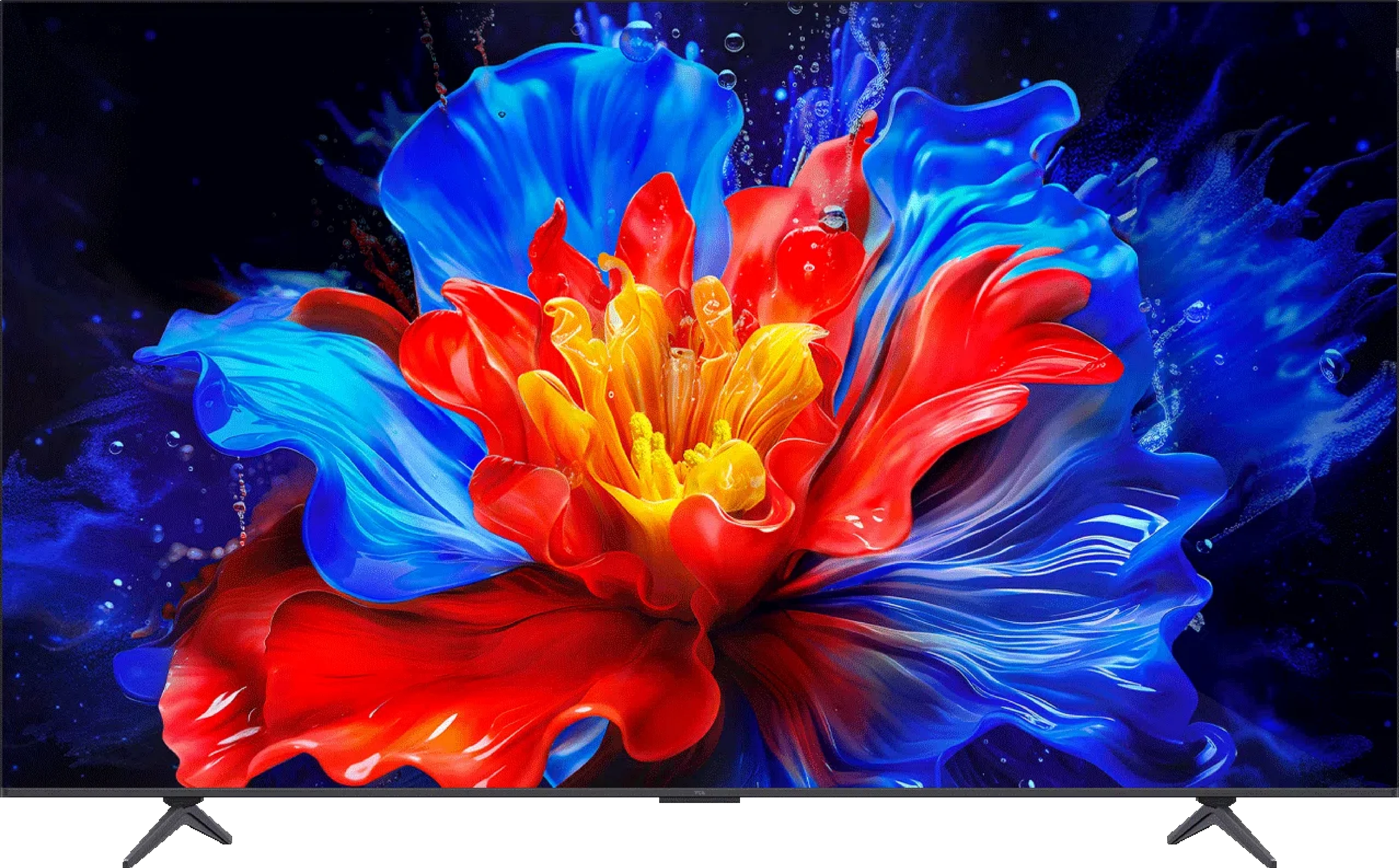
Panel type: LCD VA
Resolution: 3840x2160
System: Tizen
Model year: 2024
Complete the survey to find out the result

Panel type: LCD VA
Resolution: 3840x2160
System: Google TV
Model year: 2025
Complete the survey to find out the result

Overall rating
7.1
6.6
Movies and series in UHD quality
6.8
6.1
Classic TV, YouTube
6.7
6.0
Sports broadcasts (TV and apps)
6.6
6.1
Gaming on console
8.7
8.1
TV as a computer monitor
7.6
8.6
Watching in bright light
6.0
4.6
Utility functions
8.0
7.4
Apps
8.7
9.6
Sound quality
6.6
6.7
Complete the survey to find out what fits your preferences
Advantages
Great choice for gamers - lots of features, low input lag, 120Hz
High brightness of the panel - good performance during the day
Good black levels and contrast - VA panel with local dimming
Excellent tonal transitions
Advanced smart system "Tizen"
Pleasant sound from the built-in speakers
Good contrast thanks to the VA panel
Google TV system with a large number of applications
Good motion fluidity. 144Hz panel
Excellent features for gamers: HDMI 2.1, VRR, 4K@120Hz, HGiG, Dolby Vision in games
Very good colour gamut coverage thanks to the PFS filter (QLED)
Very good compatibility with PC. 240Hz mode
Low input lag – gaming is smooth and responsive
Well-implemented HDR dynamic tone mapping feature. Despite low brightness: HDR content looks surprisingly good.
2.1 sound from Onkyo with a subwoofer – surprisingly good bass
Very attractive price
Disadvantages
Average viewing angles
No recording function
No DTS (may hinder connection to home cinema)
Low brightness – around 250–300 nits
Very poor viewing angles
Average digital image processing
Incorrectly implemented Dolby Vision mode
System errors and glitches occur
Not very loud sound, volume limiter in operation
Our verdict
The TCL P8K is a television that immediately endears itself. It may seem cheap and from a lower range, yet it can surprise. This device demonstrates that you can also get equipment with character at this price – and it's specifically targeted towards a particular group of users. Because let's not kid ourselves, the P8K is a television designed with gamers in mind. With two HDMI 2.1 ports, VRR support, 4K at 120 Hz, HGiG, and even Dolby Vision in games – it sounds like something that was only recently found in much more expensive models. Additionally, it has a 144 Hz panel and the capability to achieve even 240 Hz on PC. At this price? It’s really hard not to smile. Moreover, it comes with Google TV, which has breathed life into this screen. Everything operates intuitively, with access to a vast library of applications and an efficient Google Assistant that actually understands what you say – even when you phrase it in your own way. Of course, this is not a perfect television. A brightness of 250–300 nits isn't overwhelming and probably won't impress in a sunny living room. But just an evening, a film, and a slightly darker environment reveal that this screen can do quite a lot. Thanks to dynamic tone mapping, the P8K performs surprisingly well in HDR, and the colours can look natural. In cinematic scenes, there's no question of a plastic, overexposed image – it's simply pleasant. Let’s not pretend that it competes with Mini LEDs or OLEDs – that’s not the point here. The P8K/P89K is meant to be a television that is simply enjoyable to use. And that is where its strength lies. For someone who wants to play games, watch Netflix, launch YouTube, and have it all in one simple device – it’s a home run. The TCL P8K shows that "cheap" does not have to mean "poor quality". It is a television with character that doesn’t pretend to be premium equipment, yet delivers a lot. And perhaps that's why it’s so easy to like.
TV appearance




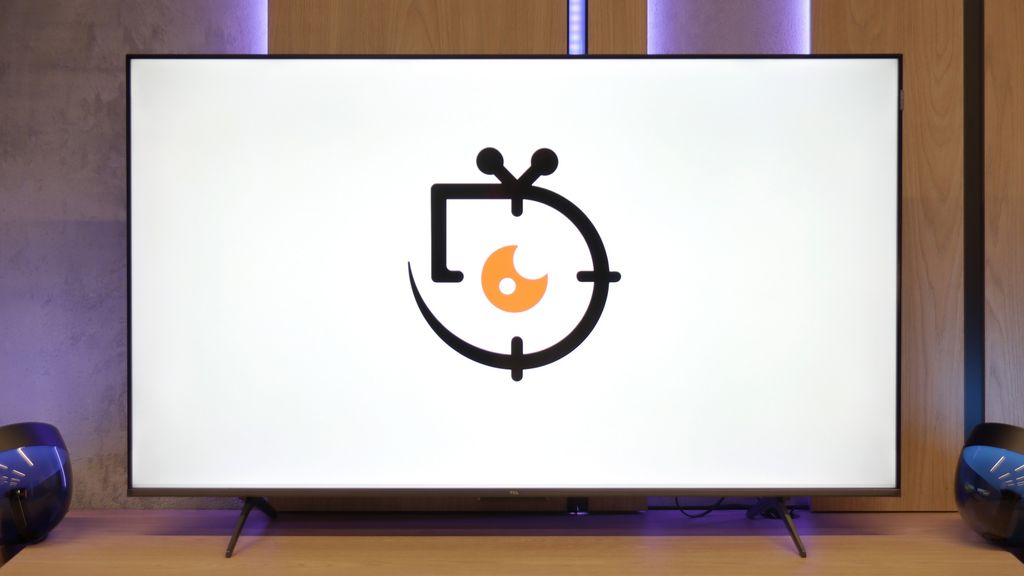
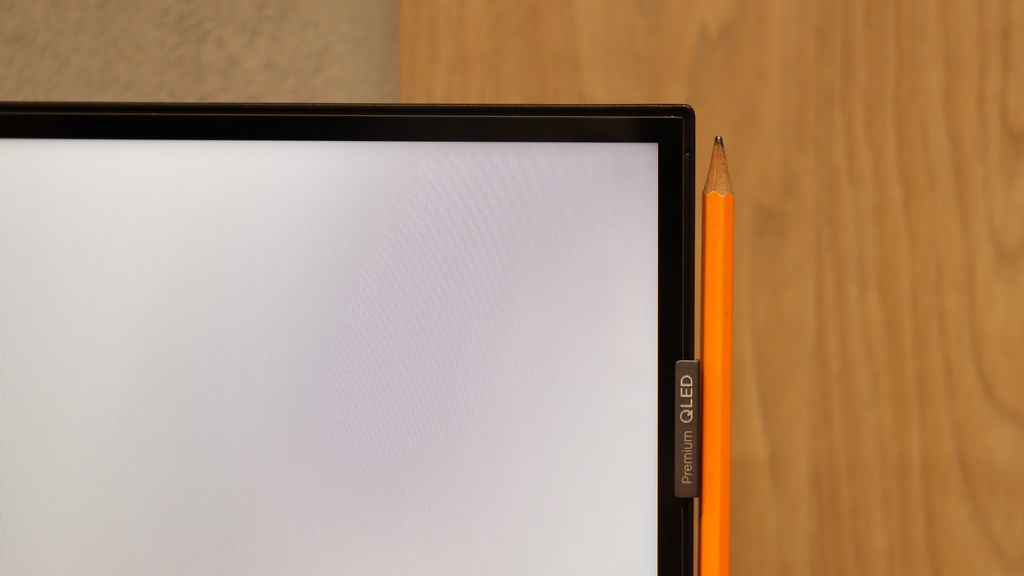
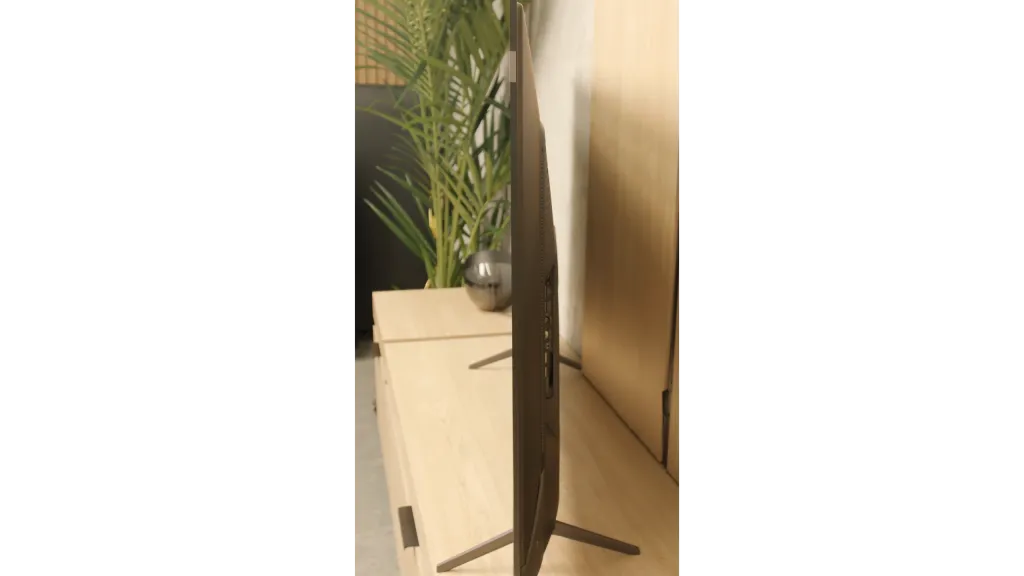
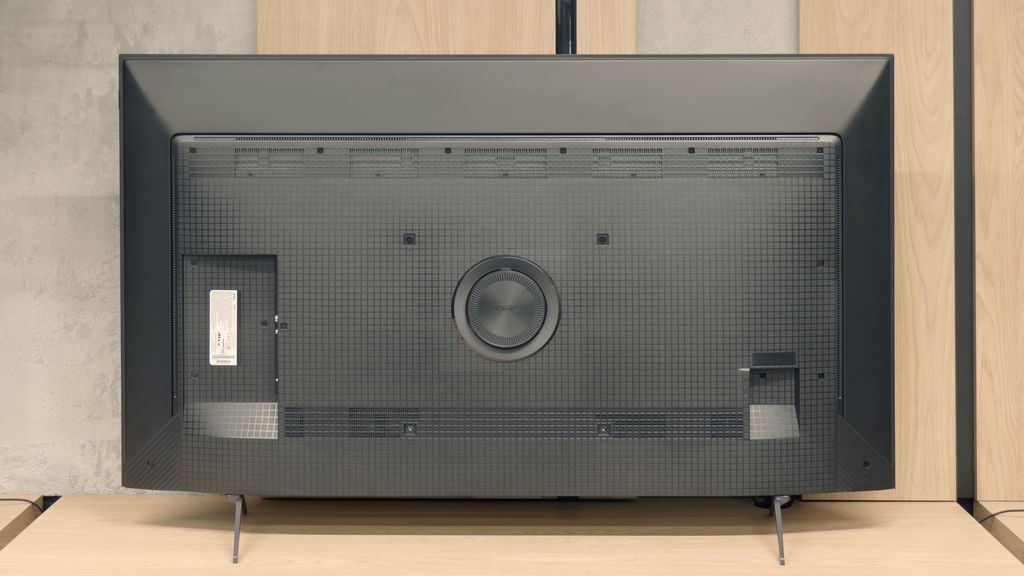
Contrast and black detail
6.7/10
5.5/10
Local dimming function: Yes, number of zones: 100 (10 x 10)
Local dimming function: No
Contrast:

Result
37,350:1

Result
8,850:1

Result
20,350:1

Result
4,300:1

Result
3,800:1

Result
5,650:1

Result
3,950:1

Result
5,700:1

Result
5,450:1

Result
2,600:1
Halo effect and black detail visibility:

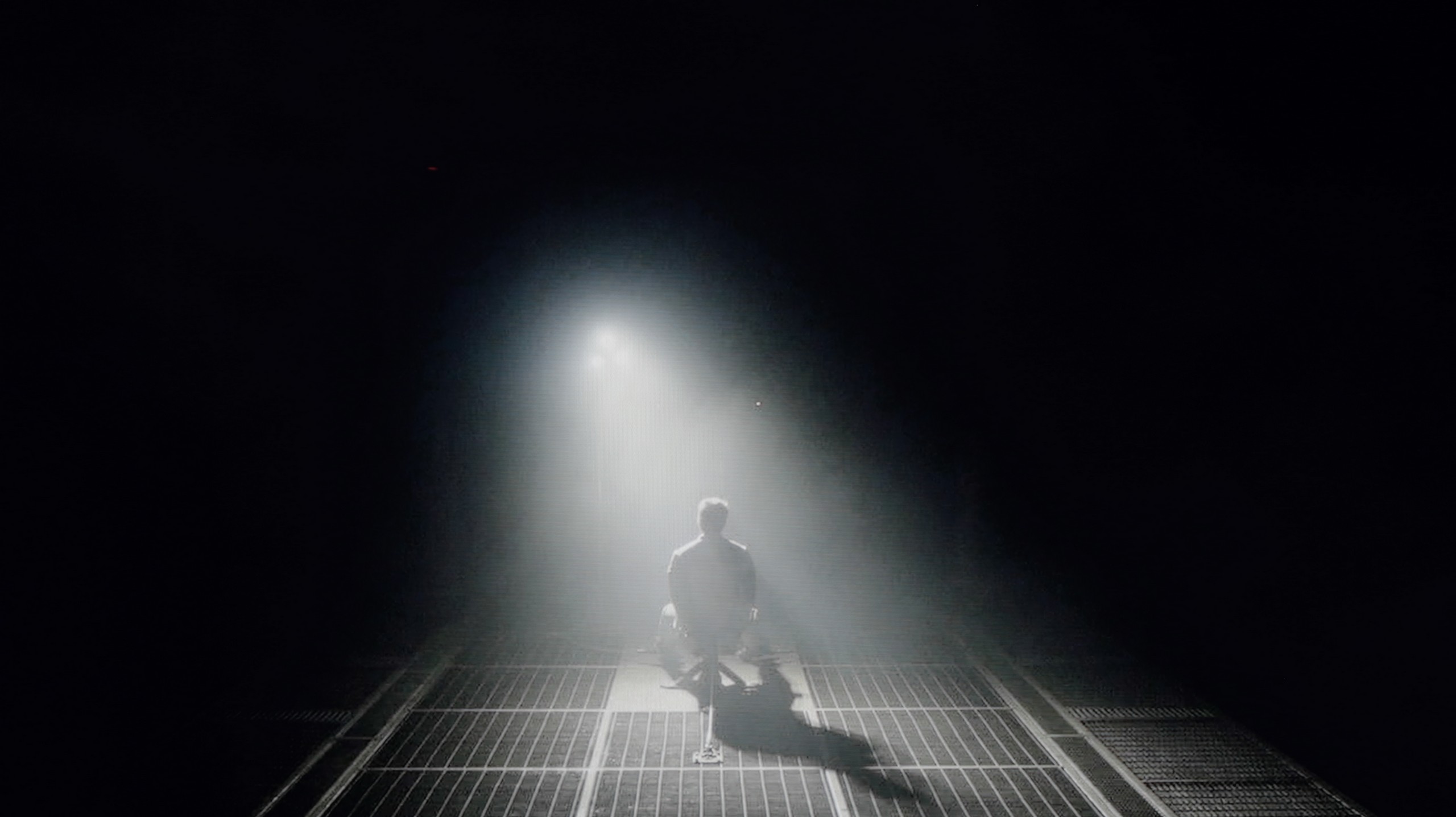
The Samsung Q80D television is equipped with a VA panel, which immediately affects the difference in contrast and black reproduction compared to IPS panels. VA panels offer significantly better contrast and deeper blacks, while IPS panels feature better viewing angles but worse contrast. In the case of the 55" model, the television has 100 local dimming zones, and it's worth noting that this number may vary depending on the screen size. Thanks to local dimming, blacks appear well, but it's important to mention that the algorithm of this technology combined with the limited number of zones can sometimes "go crazy". Bright objects may be dimmed to achieve better blacks. During a test scene from the film Oblivion, the lights blended into a single spot, regardless of the dimming settings, highlighting the limitations of this technology. In the film Sicario 2, large dimming zones were particularly noticeable, for example, with the small lights of a helicopter, indicating how large the areas controlled by a single dimming zone are. Despite these imperfections, local dimming technology still offers significantly better image quality than televisions without this feature or with edge lighting. With the ability to completely turn off individual zones, the television can provide a noticeable boost in brightness in selected areas, which can give the image a cinematic effect, especially in dark rooms.
TCL P8K is an example of a television that shows that even in the lower tier, one can still encounter solid contrast. The VA panel does a really good job here – a measurement around 6000:1 may not sound spectacular, but in actual scenes it produces an effect that simply delights the eye. In the darkness of the forest in "The Revenant" or in the futuristic shots of "Oblivion", depth and light separation are visible, which is difficult to expect from equipment at this price. The P8K can render darkness without the feeling that everything is drowning in grey. The Direct LED backlighting also works in its favour. Of course, we do not have any local dimming here, but the system can dim the entire screen when the scene requires it or slightly brighten it to bring out details in bright areas. This is somewhat of an analogue approach to contrast – simple but effective. On the test pattern from the legendary Pioneer Kuro, it was well evident: the television prioritised bright points while the background lost some depth; however, it still maintained a decent appearance. Of course, there is no perfectly inky black here. In a dark room, it is noticeable that the black leans towards blue, but despite this, the overall presentation is simply good. Under normal home conditions, the contrast is entirely sufficient to feel the cinematic atmosphere.
HDR effect quality
5.8/10
4.5/10
Luminance measurements in HDR:

Result
927 nit

Result
423 nit

Result
612 nit

Result
242 nit

Result
856 nit

Result
207 nit

Result
238 nit

Result
313 nit

Result
251 nit

Result
299 nit
Scene from the movie “Pan” (about 2800 nits)


Scene from the movie “Billy Lynn” (about 1100 nits)


Static HDR10


Dynamic: HDR10+
Dynamic: Dolby Vision


HDR luminance chart:
TCL P89K / TCL P8K
HDR luminance
Samsung QLED Q80D
HDR luminance
In the context of HDR, the Samsung Q80D television achieves very positive brightness results in the tested film scenes, where the frame is filled with light, reaching values from 600 to 900 nits, allowing the user to experience a great juiciness of the image. Such results allow the user to feel the difference between HDR and SDR quality. Unfortunately, problems arise in situations where small light effects occur against a dark background. In such cases (e.g. test pattern 4 from the film Sicario 2), a noticeable drop in brightness can be observed, caused by the large sizes of the dimming zones used here. This limitation, combined with the dimming algorithm, affects how the television handles small bright elements against a dark background. At that point, we may perceive an unwanted lack of brightness, and the HDR effect resembles that of SDR.
The maximum brightness of the TCL P8K is around 300 nits, although in real film scenes, the television maintains more of a level of about 250 nits. These values cannot be considered sufficient to achieve a full HDR effect – they are closer to a solid base for SDR content. Therefore, we will not see spectacular flashes, bursts of light, or moments in which the screen actually "blinds," as is the case with more expensive models. This makes the image somewhat flat, and the differences between light and shadow are more symbolic than realistic. Fortunately, TCL has a few aces up its sleeve that save the overall reception. One of these is the coverage of the DCI-P3 colour palette at around 93–94%. Thanks to an additional QLED layer (PFS LED), the colours gain depth and intensity, clearly surpassing standard LCD panels. As a result, although there is a lack of the typical "wow effect" associated with HDR brightness, the image itself can impress with its saturation and vibrant tones, making film scenes pulse with colours and not appear strongly washed out.
Factory color reproduction
6.8/10
5.4/10


Factory Mode
After calibration
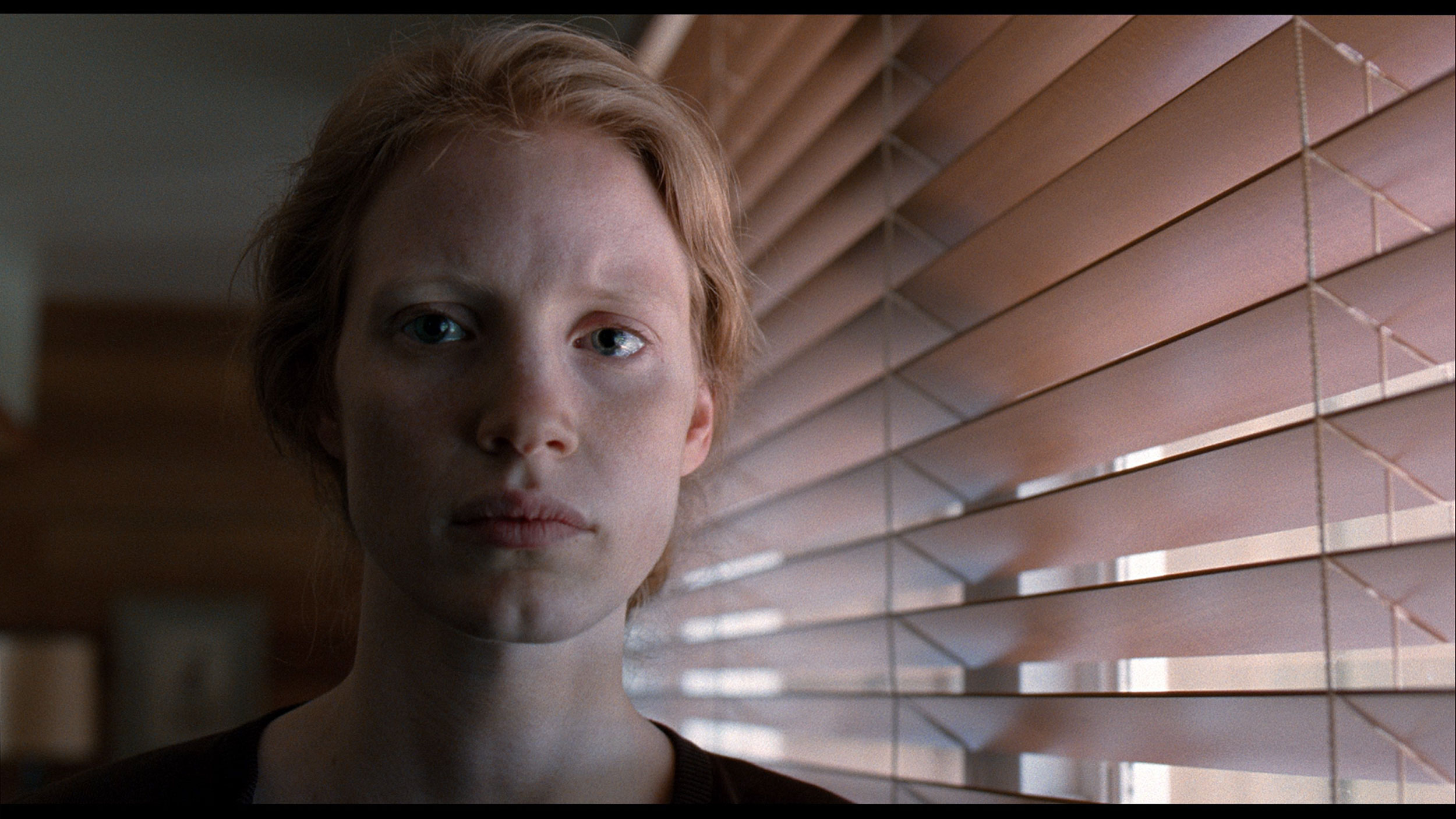
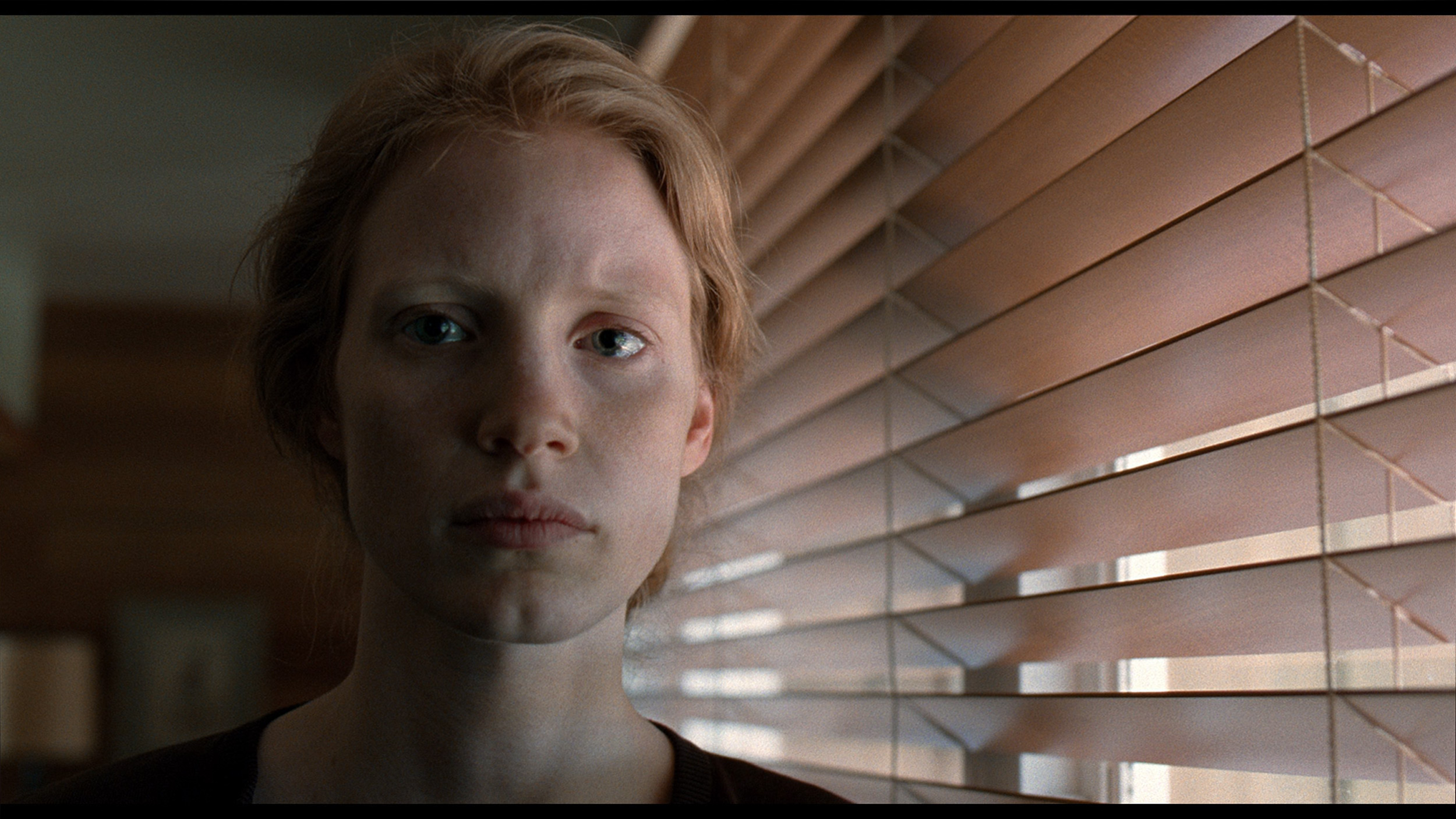
Factory Mode
After calibration
In "Filmmaker" mode, which is the best choice out of the box, the Samsung Q80D TV shows solid colour reproduction. For SDR content, a visible drop at the beginning of the gamma curve suggests that details in dark scenes may be less pronounced, impacting the overall viewing experience. Regarding white balance in SDR content, while it is generally accurate, significant drops in blue colour when screen coverage exceeds 70% can result in less natural hues in bright and dark scenes. Users may notice that some blue elements in the image may appear less intense, and the overall colour will have a warmer tint.
In contrast, for HDR content, the EOTF curve being above the reference line for most of the time indicates that the TV may struggle with accurately reproducing brightness and details in the brighter areas of the image, which may be disadvantageous for the viewer. It is also worth noting the substantial drop at the beginning of this graph, indicating that the TV has difficulties reproducing brightness in the darker areas of the image, as seen in the contrast and black tests, where several scenes were unable to showcase the full capabilities of the TV's brightness. In terms of its white balance, the initially good results on the graph are promising, but the sharp drop in red colour, which significantly falls down, combined with a large increase in blue colour, may lead to inaccuracies in reproducing certain skin tones and other key colours. This phenomenon may be noticeable to viewers in scenes where colour details are crucial.
In Filmmaker mode, the TCL P8K revealed certain imperfections in image reproduction from the outset. We noticed that the television had a tendency to slightly brighten scenes – its gamma was somewhat low, causing the image to appear slightly "washed out", lacking depth, as if the contrast had slipped out of control. This was most evident in HDR content, where the EOTF brightness graph clearly deviated from reference values. As a result, darker areas of the image appeared too gloomy, while brighter areas did not always reach the correct level of luminance. Another noticeable issue was a slight overemphasis on blue – the television stubbornly boosted this colour, causing certain parts of the image, especially skin tones and reds, to have a subtle purple tint. This is not a major flaw, but it is noticeable to a trained eye. Fortunately, most of these errors could be corrected during calibration. You can see the results of this adjustment in the graphs and photos below.
Color reproduction after calibration
8.1/10
7.5/10

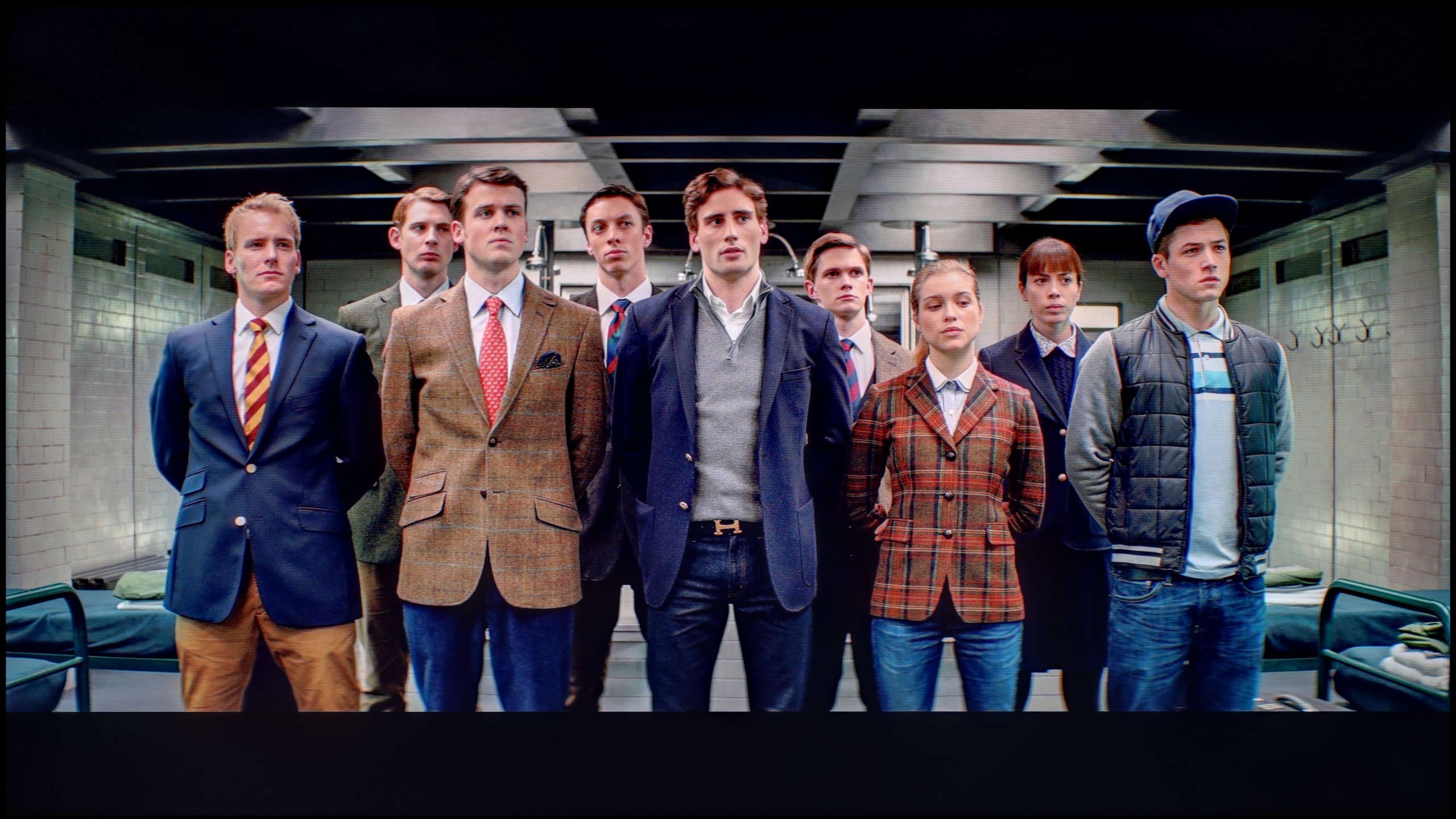

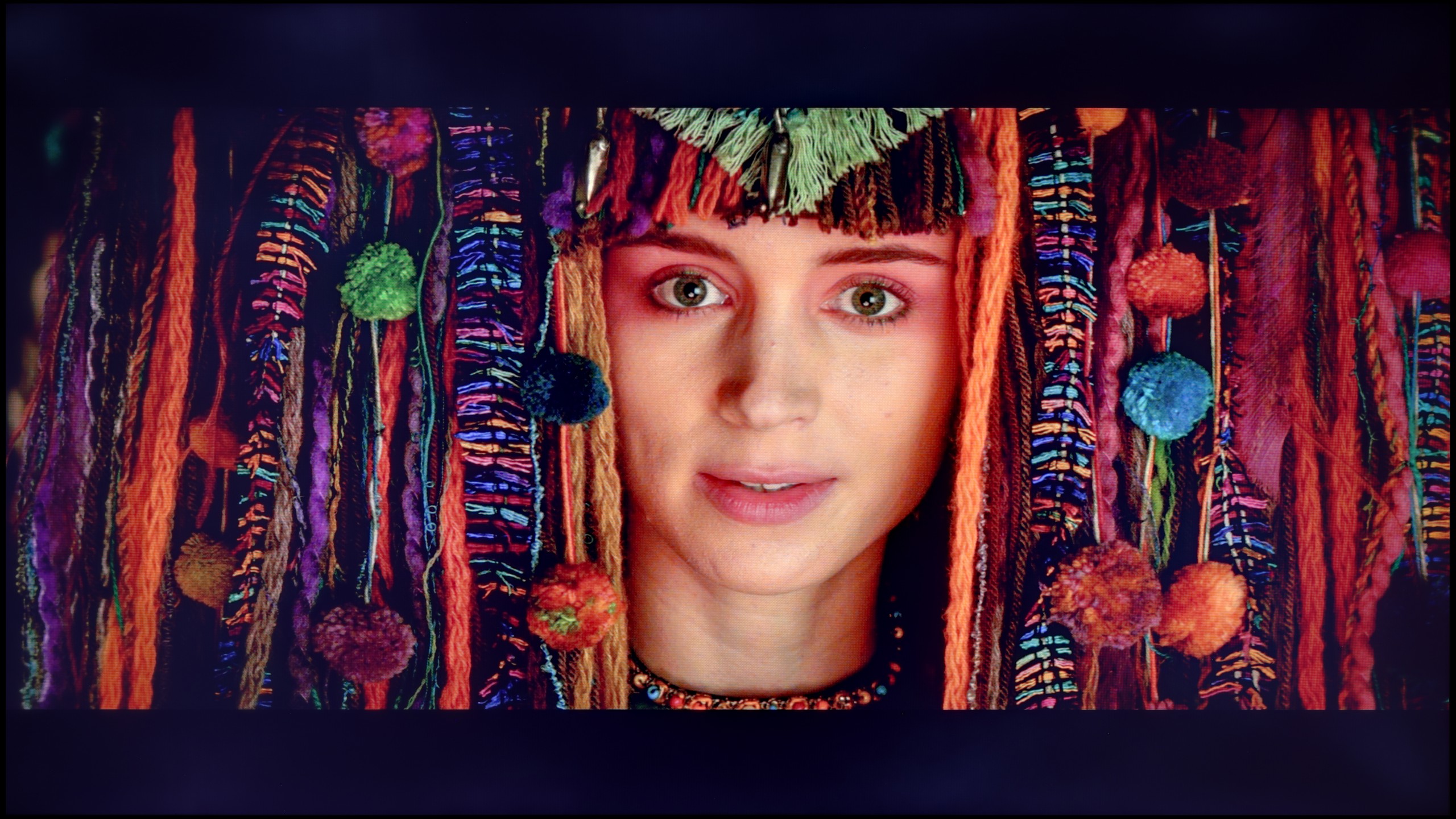
The film mode after calibration looks significantly better than the one you can see when taken out of the box. Samsung offers an advanced range of calibration tools in its televisions. Among them are 2- and 20-point greyscale adjustment and CMS (Colour Management System). Both in HDR and SDR mode, the white balance has improved significantly, although there are minor errors at the end of the graph in the case of HDR content. The contrast has also been greatly improved, and the gamma curve responsible for SDR shows better results. However, when it comes to HDR, the EOTF curve in the television seems to be at an ideal level at first glance. Yet, when we delve deeper and enable the EOTF graph while watching films, we may notice that all the lines of the curve are above the reference line. One could even say that the television is "cheating" when playing film materials. Such a situation, where the EOTF curve is above the reference line, makes the screen – although it may seem brighter, which some users may find attractive – lose detail in the darker parts of the image. In practice, this means that in scenes with a lot of shadows or dark elements, the television is unable to accurately render the details that should be visible.
After calibration, the TCL P8K showed a completely different face. It managed to achieve nearly perfect, even reference-level color reproduction in both SDR and HDR content. The screen no longer had a tendency towards a cool tint, and the white balance was perfectly balanced. The gamma values for SDR material also finally look as they should – the image has the proper depth and no longer appears washed out. The only remark that can still be made about the P8K concerns its "Chinese" traits, known from most TCL models. The TV still likes to manipulate saturation in HDR content in its own way – sometimes slightly boosting it, sometimes smoothing it out, which means the effect is not always fully predictable. Nevertheless, after calibration, the colors look stunning, and their accuracy is truly surprising. In most cases, measurement errors dropped below values of 1-2, which is a result that significantly more expensive models would not be ashamed of.
Smoothness of tonal transitions
8.8/10
9.1/10

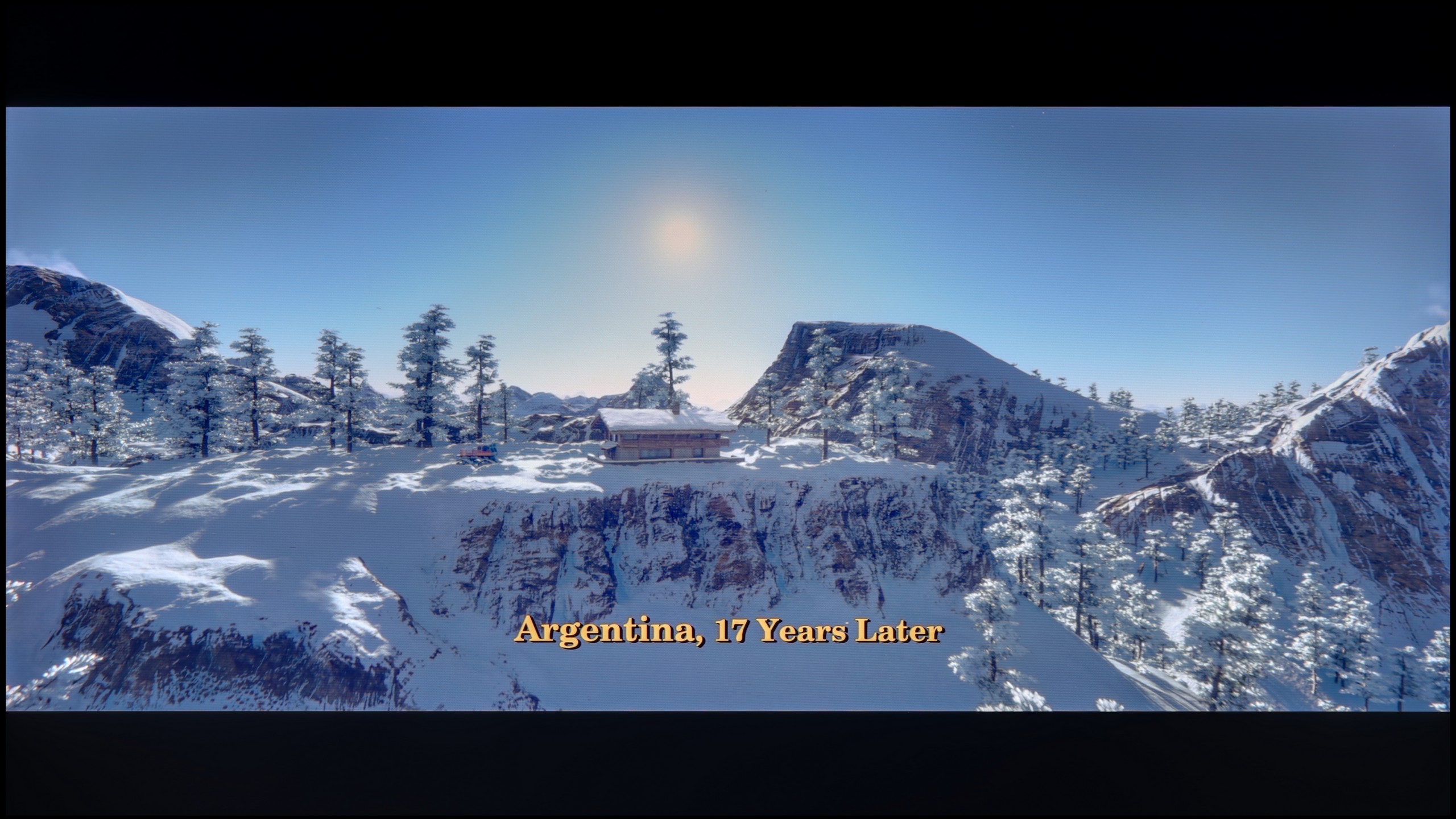



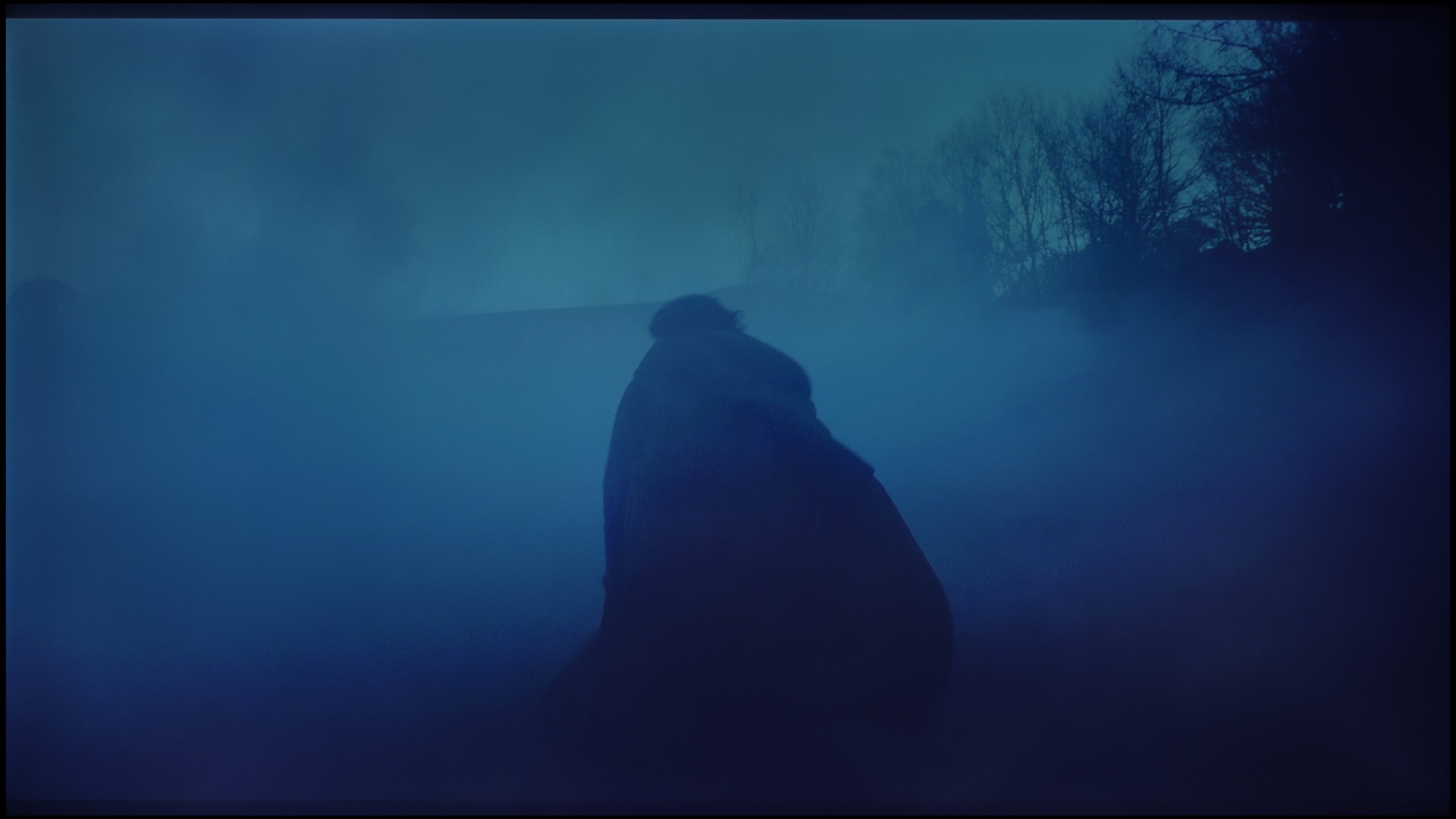

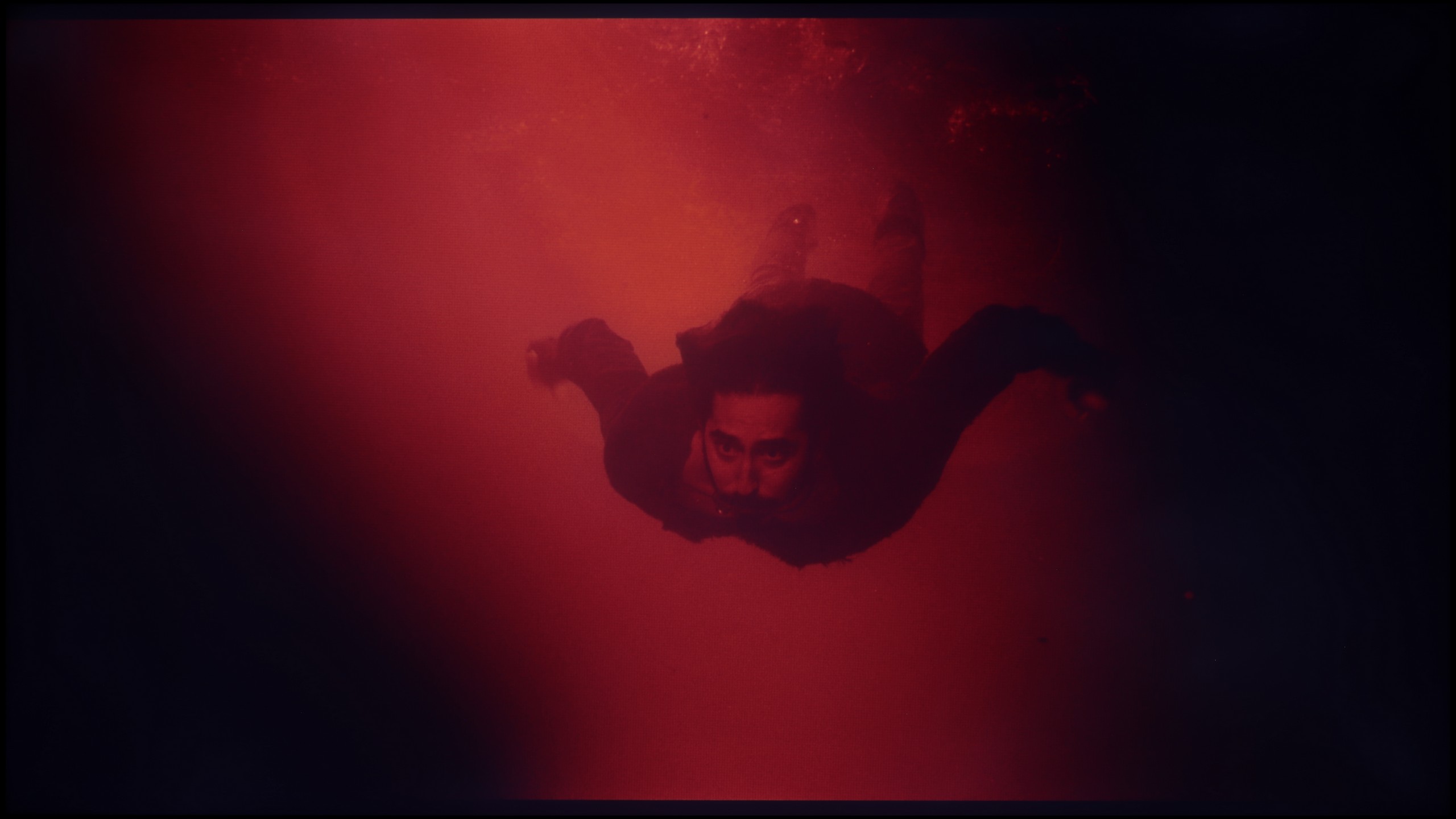




The tonal gradation in the Samsung Q80D television is at an excellent level and can be considered one of its stronger points. Even in the most demanding scenes from the films we tested, it performs exceptionally well. Any potential issues with smoothing transitions in colours are minimal and subtle. The average viewer will most likely not notice them, which translates to an overall positive visual experience in everyday use.
The television performs excellently in colour blending – the gradients are smooth, free from visible bands or unpleasant jumps. This is best seen in classic test scenes, such as shots from the film Kingsman or The Martian, where most televisions reveal their weaknesses. The P8K maintains the consistency and subtlety of colours, creating an image that is pleasing and natural to observe.
Minor imperfections only appear with extremely dark shades or on grey palettes – this is the moment when even significantly more expensive models start to struggle. However, this does not matter in everyday viewing. Overall, the TCL P8K excels in colour blending, offering a smooth, harmonious image free from artifacts.
Image scaling and smoothness of tonal transitions
7/10
6/10
Smooth transition function

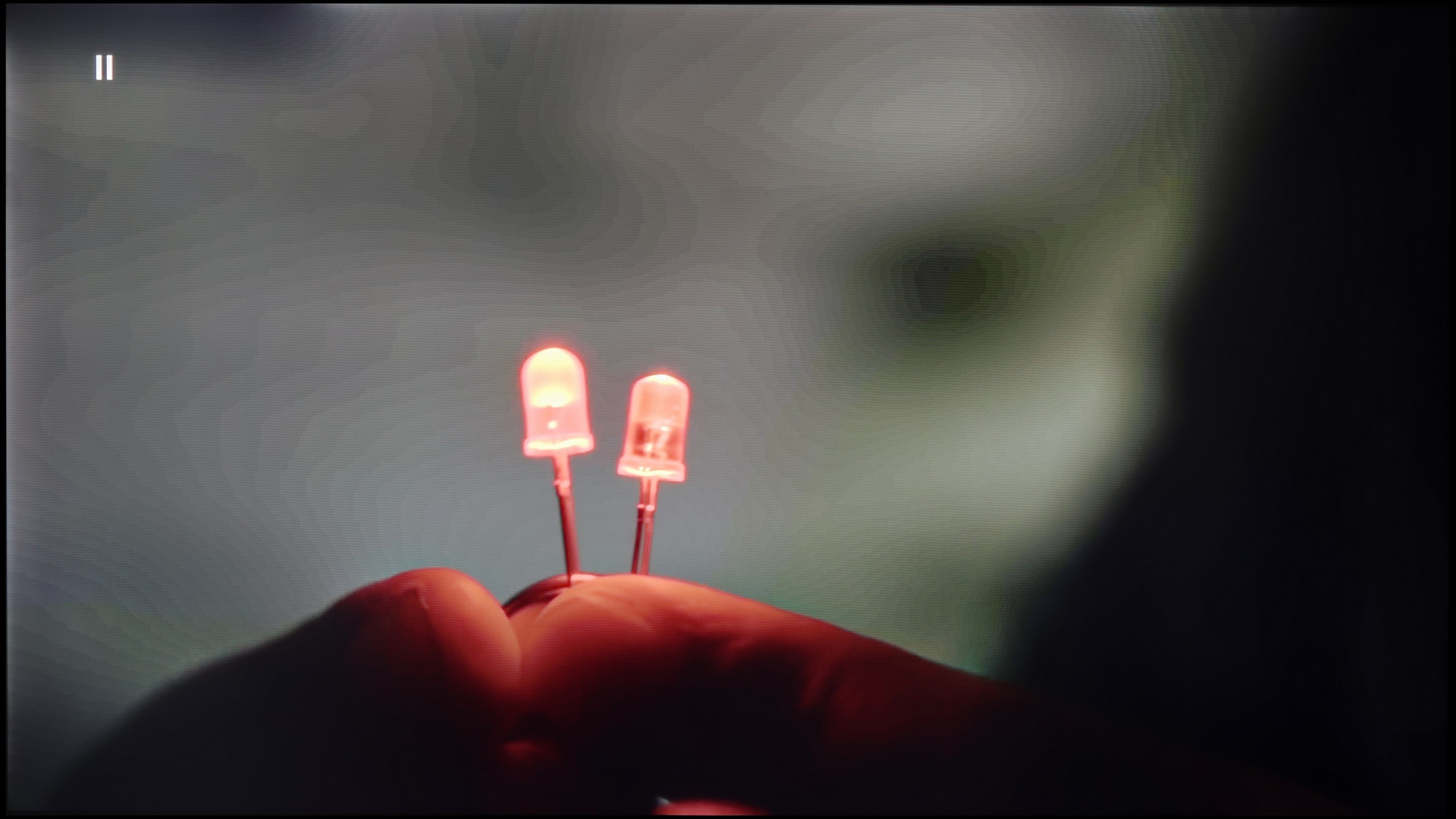
Image without overscan on the SD signal

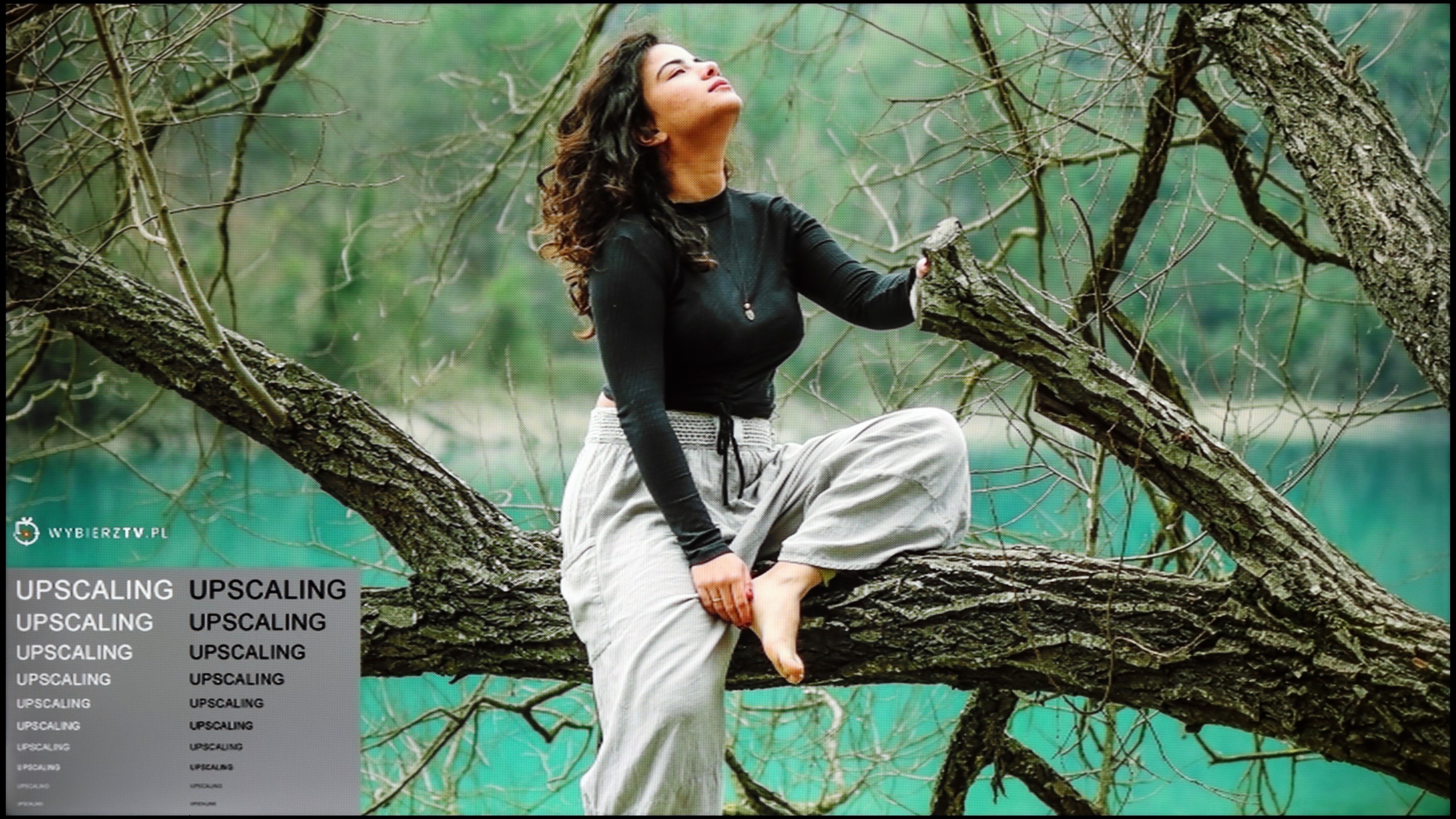
Samsung Q80D performs very well with low-quality materials. The noise reduction works on the principle of gentle grading, making it very effective in smoothing out unwanted image disturbances. Unfortunately, this same effectiveness also causes elements that should not be smoothed, such as film grain, to become blurred. For those who value a pliable, smoothed image more, this can be seen as a significant advantage, especially for lower-quality content.
When it comes to image scaling, Samsung Q80D stands out positively in this aspect, significantly enhancing viewing comfort. The television handles the conversion of lower-resolution materials well, improving their quality and detail. For example, in the attached image with the model, there are no visible artifacts or excessive fraying of branches, which attests to the advanced image processing technology.
The TCL P8K performs somewhat worse when it comes to the fluidity of tonal transitions in lower-quality materials. The television does offer a function to smooth out unwanted bands; however, its effectiveness leaves much to be desired. Even at the highest setting, it's hard to talk about any real improvement – at times the effect is almost the opposite of what is intended, as the function can introduce small artifacts and unnatural blurring on the screen.
On the other hand, upscaling – that is, scaling the image to 4K resolution – looks significantly better. The P8K handles this task surprisingly well – HD content, and even SD, is enhanced in an aesthetically pleasing manner without excessive loss of sharpness. While there are slight "hard" edges typical of this class of equipment, this can be easily adjusted with the sharpness slider to suit personal preferences. The final effect is more than satisfactory, especially considering the price range in which this model is situated.
Blur and motion smoothness
7.3/10
7.1/10

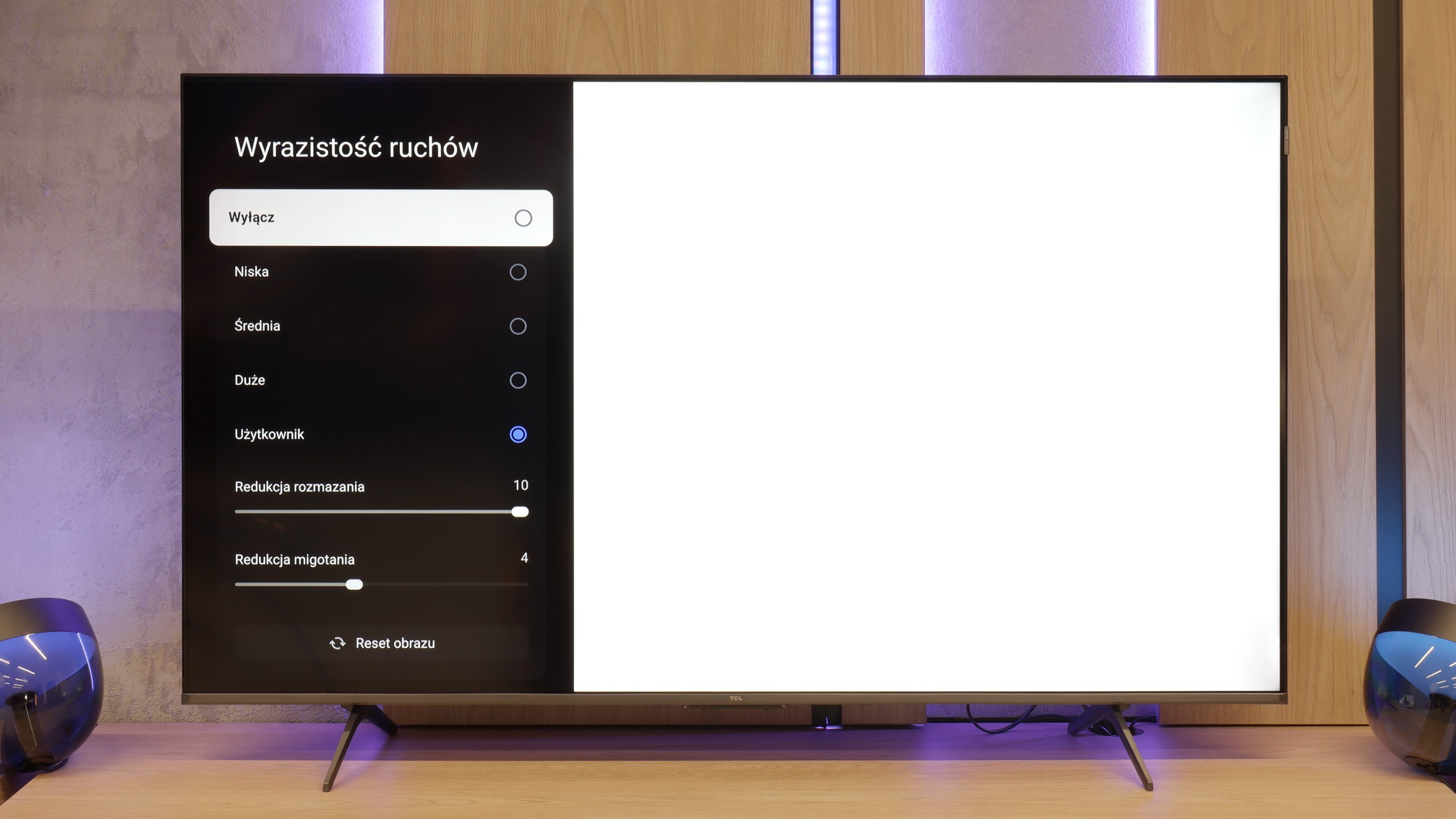
Blur (native resolution, maximum refresh rate):



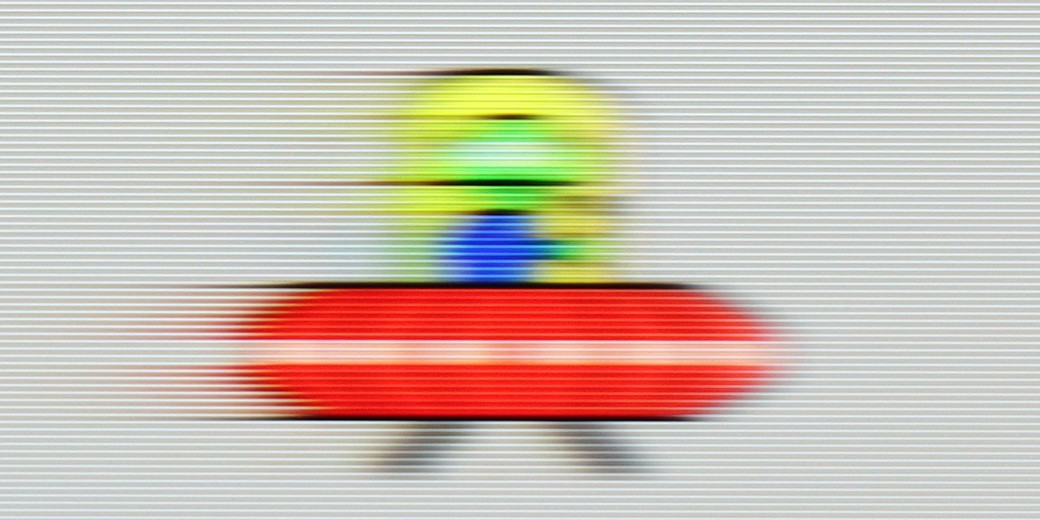
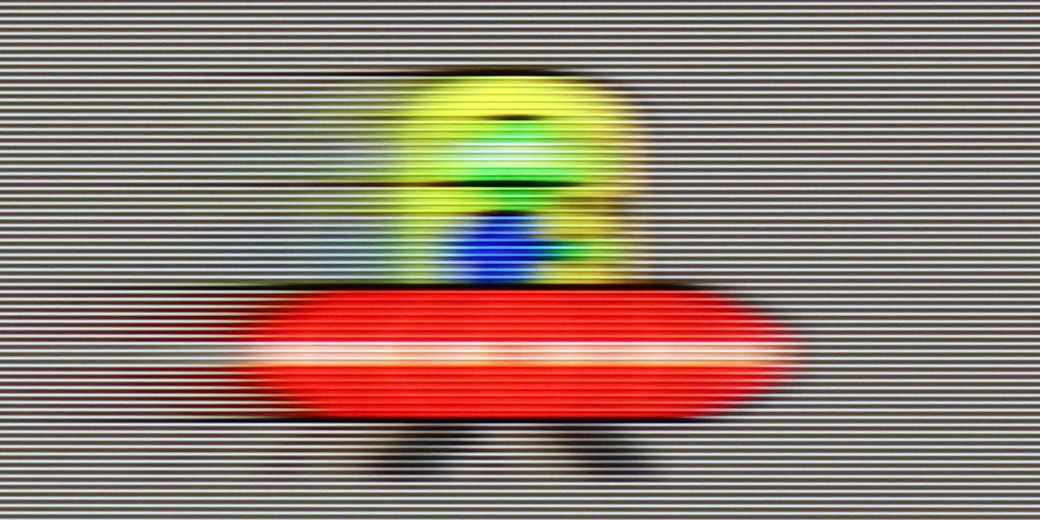
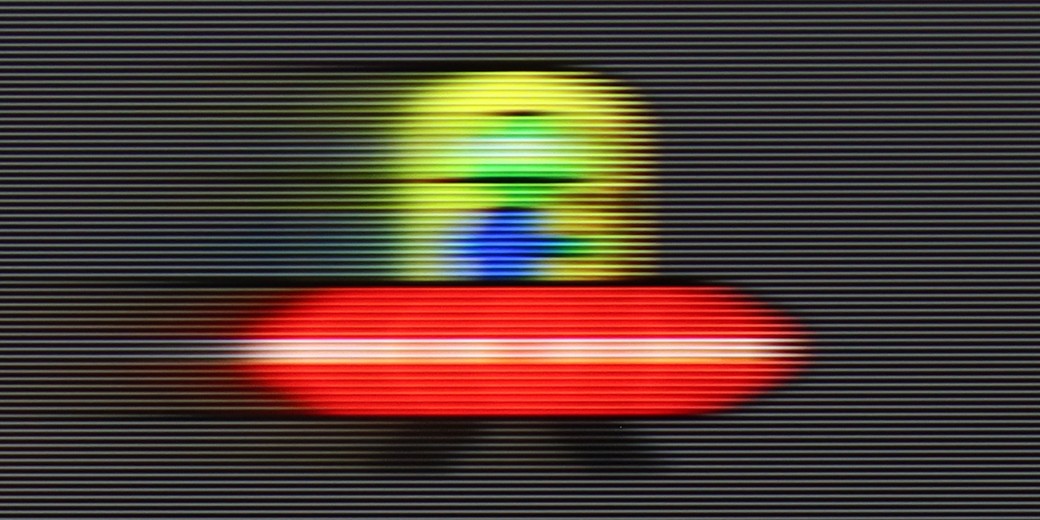
Blur (BFI function enabled):
Image flickers in this mode



Smużenie ():
Smużenie (4K@144Hz):
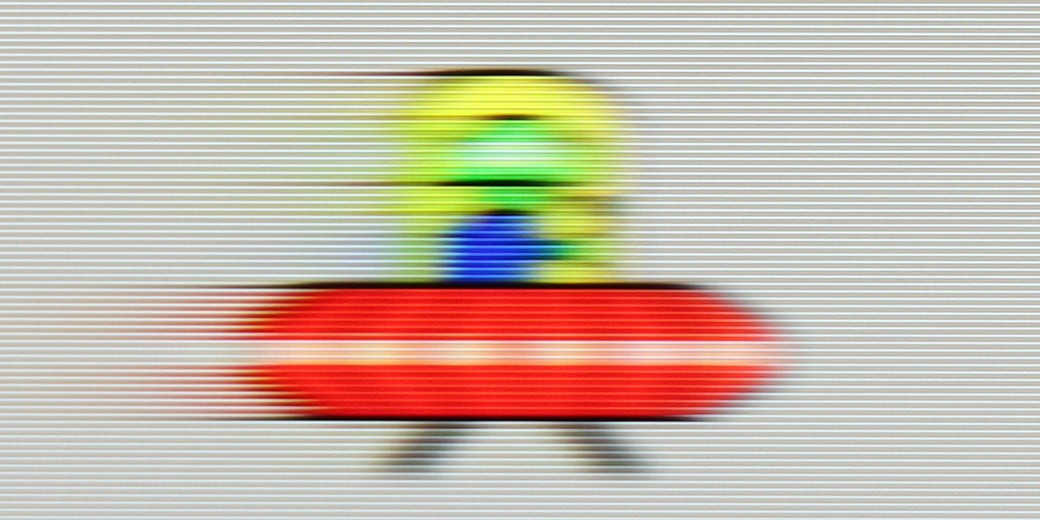
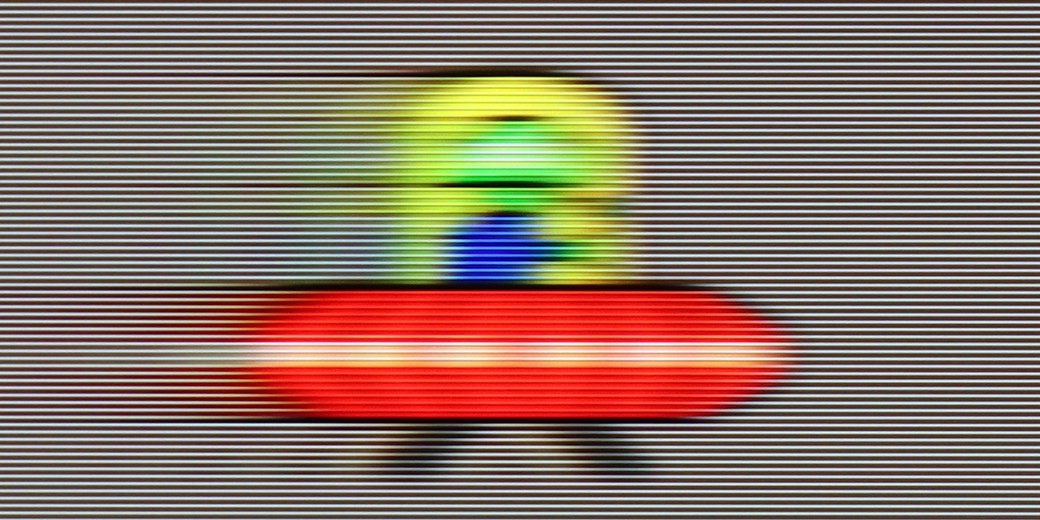
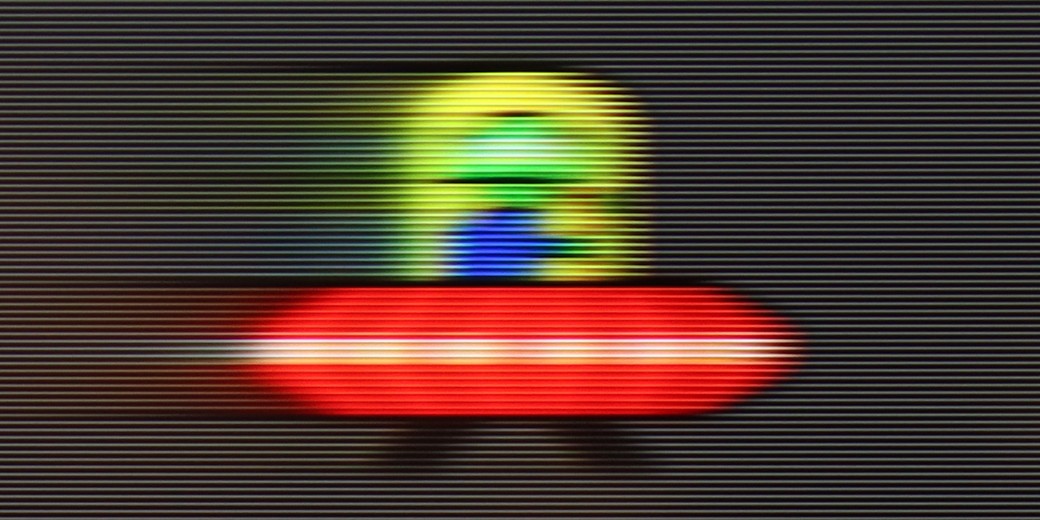
The Samsung Q80D television stands out very positively in terms of motion fluidity and motion blur reduction, primarily due to the applied 120Hz panel and above-average response time of the panel. Users have two options for adjusting fluidity: "Motion Smoothing," which allows for adjustment of smoothness on a 10-point scale, and "Blur Reduction," particularly effective at higher refresh rates, improving the sharpness of rapidly moving objects. In the UFO test, no motion blur is visible behind the moving object, and the image is not cloned forward, indicating a lack of overshoot effect.
TCL P8K is one of the cheapest televisions offering a refresh rate of 144 Hz, which in itself is quite an advantage in this price segment. Thanks to the fast panel, this model can confidently be recommended to both sports fans and video gamers – the image is smooth, and the movement of the ball or dynamic actions look natural. However, this does not mean that the P8K is suitable solely for sports. On the contrary – it can also maintain appropriate dynamics in films without introducing the artificial effect of "theatricality", as long as we set the parameters wisely. The television is equipped with a motion smoother called "Motion Clarity", which features two sliders: blur reduction and judder reduction. The first is responsible for smoothing the image by generating additional frames, which increases fluidity, but may cause a slight soap opera effect. The latter, on the other hand, reduces judder and improves sharpness during movement, although it can slightly darken the screen. Properly adjusting these two parameters allows for a really good balance between natural motion and fluidity. It has a 60 Hz refresh rate, but it is hard to say that it is a top-tier panel in terms of response speed. It will perform well for dynamic content, although more demanding users will notice that it is not a screen from the highest class in terms of motion clarity.
Console compatibility and gaming features
9.5/10
9.8/10
- ALLM
- VRR
- VRR range48 - 120Hz48 - 240Hz
- Dolby Vision Game Mode
- Correct implementation of HGIG
- 1080p@120Hz
- 1440p@120Hz
- 4K@120Hz
- Game bar

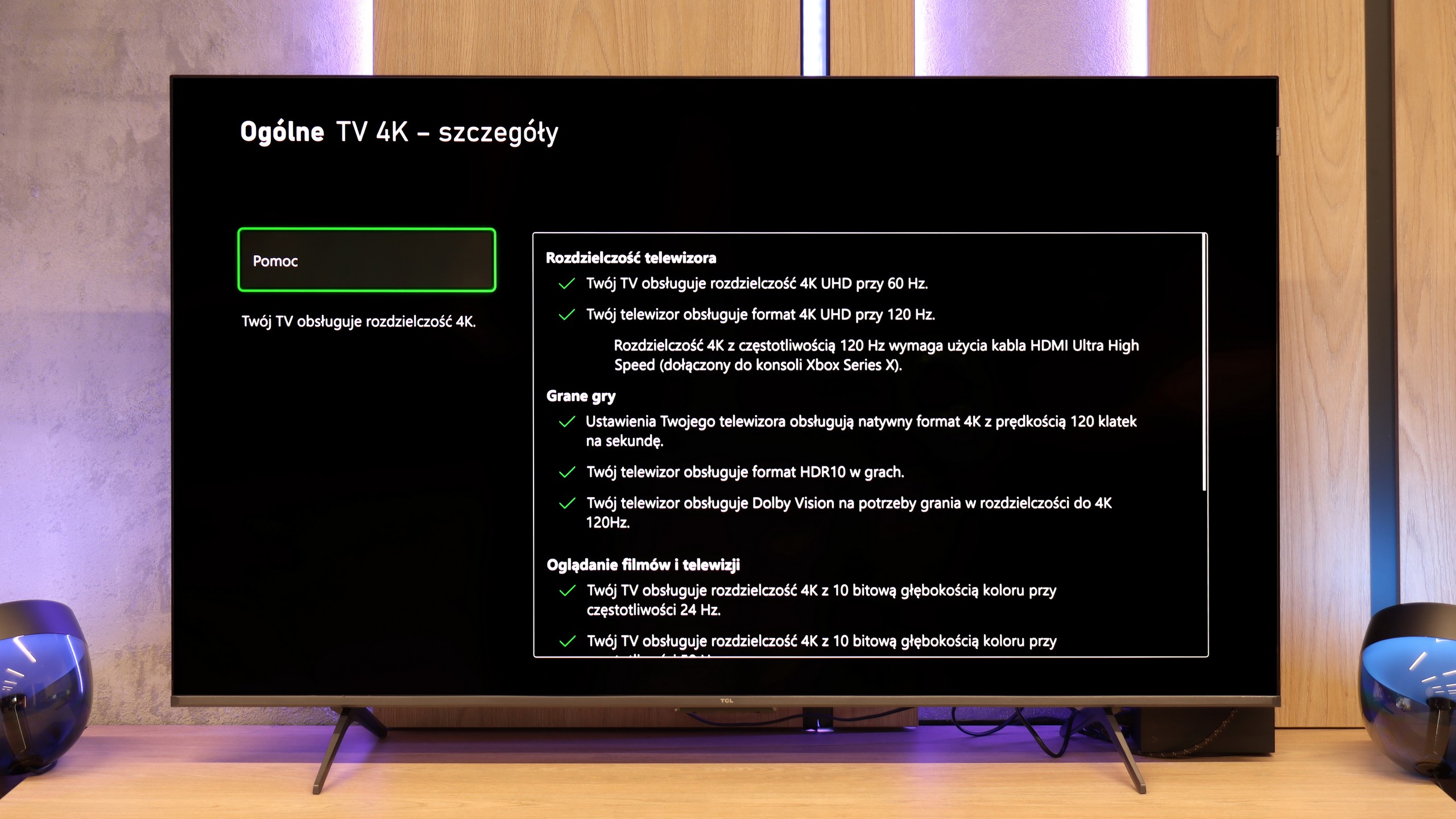

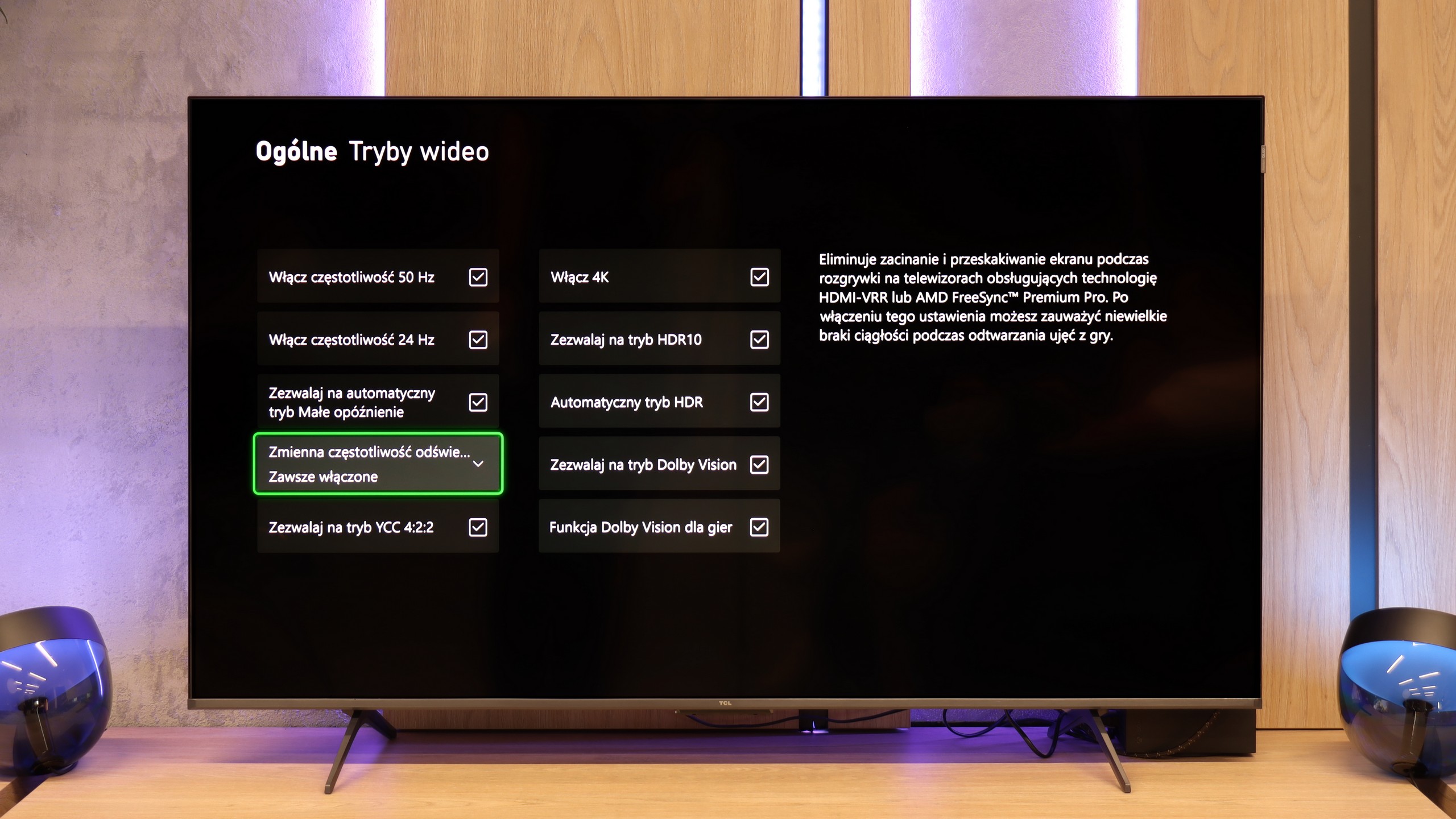

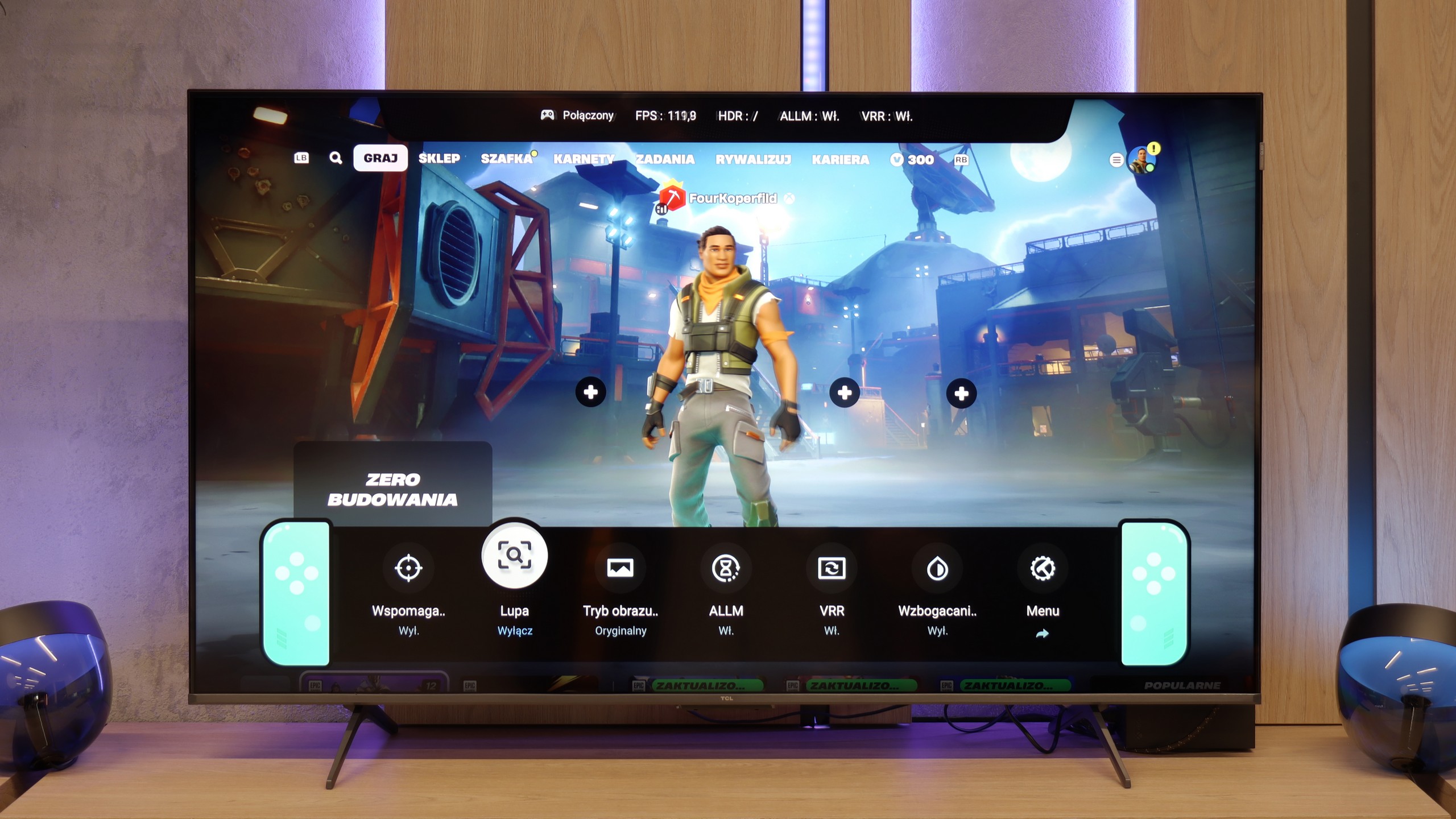

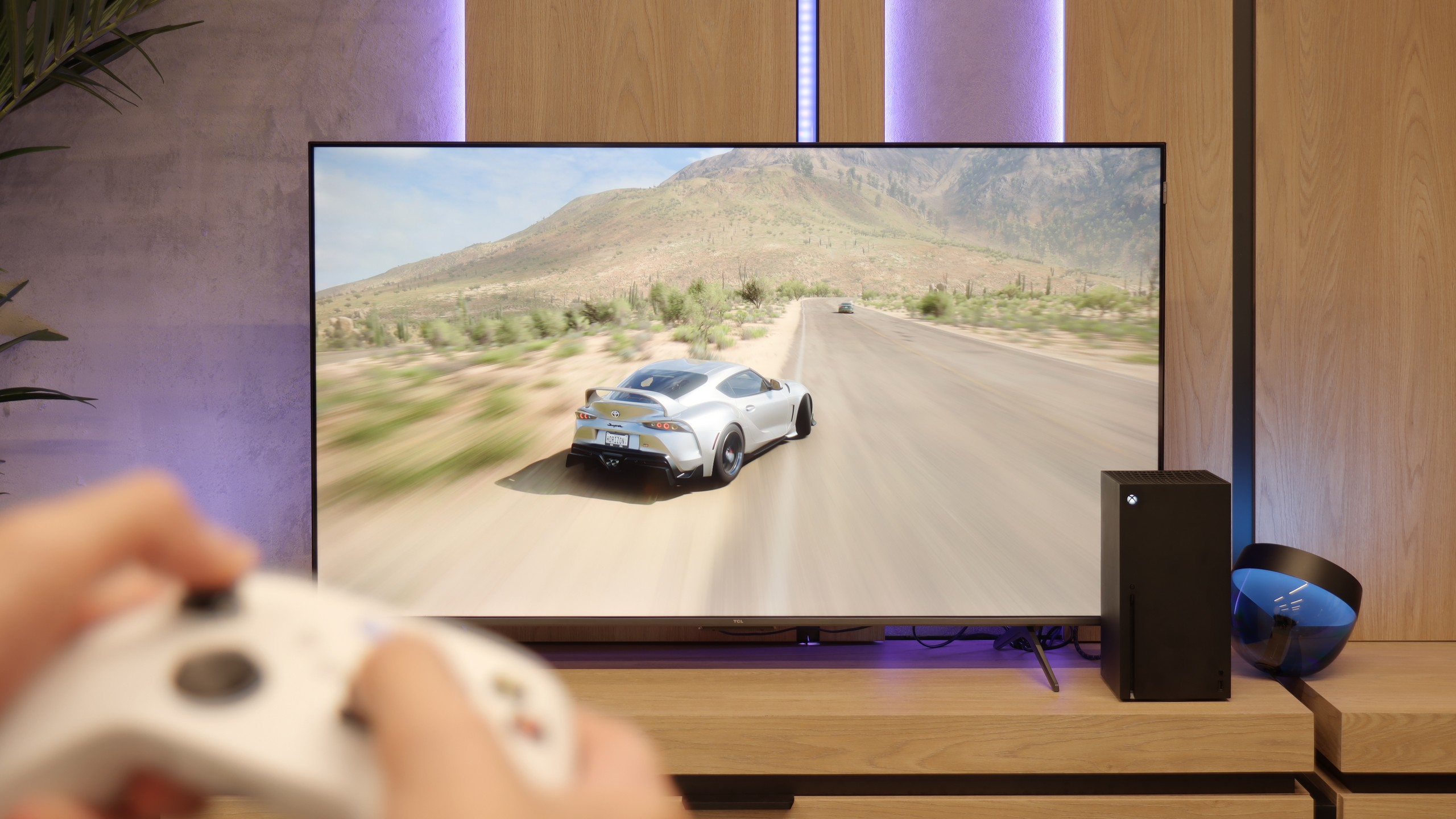
The Samsung Q80D television is a true gem for gamers. It is equipped with four HDMI 2.1 ports, which is a rarity, especially in this price range. This allows users to enjoy features such as ALLM (Auto Low Latency Mode), VRR (Variable Refresh Rate), and 120Hz in 4K resolution. These features ensure smoothness and responsiveness of the image, which is a key aspect during dynamic gameplay. The television also supports HGIG (HDR Gaming Interest Group), enabling optimal display of HDR content in games. Additionally, it is equipped with a Game Bar that allows quick access to gaming settings. Users of Nvidia graphics cards will also be pleased thanks to the implementation of G-Sync. This feature eliminates stuttering and screen tearing. The only downside is the lack of support for Dolby Vision mode, which may be disappointing for users looking for this HDR format. It is also worth mentioning that since 2022, thanks to a partnership with Microsoft, Samsung televisions offer the Xbox Game Pass application, allowing for cloud gaming. This is an additional advantage for gamers who want to access a wide library of games without the need for a console.
Although the TCL P8K is a budget television, it cannot be said that it is unsuitable for gaming. On the contrary – it is a screen that can pleasantly surprise any gamer. It features two HDMI 2.1 ports, allowing for 4K output at 120 Hz without any issues. For those gaming on a PC, they will also be pleased to know that the television can operate with a refresh rate of up to 240 Hz at a lower resolution – a small thing, but it delights. Additionally, it comes with a full set of gaming features: automatic game mode, Game Bar with quick parameter previews, VRR, HGiG, and support for Dolby Vision in games. All of this makes gaming on the P8K a truly enjoyable experience – the picture is smooth, the response is quick, and the television communicates well with next-generation consoles. The TCL P8K shows that a cheap screen doesn't have to mean giving up on fun. Certainly not in terms of gaming.
Input lag
9.8/10
9.5/10
SDR
HDR
Dolby Vision
There isn't much to say here, the input lag at this level is simply remarkable. It's hard to achieve a better result that will satisfy gamers! The television performed excellently at every tested resolution and refresh rate, both in SDR and HDR.
In terms of latency, the TCL P8K performs really well. In game mode at 4K and 60 Hz, the input lag is around 22 ms, and at 4K and 120 Hz it drops to 13 ms. These figures ensure that the television responds quickly and there is no noticeable 'lag' between the controller and the screen.
Compatibility with PC
7.6/10
8.6/10

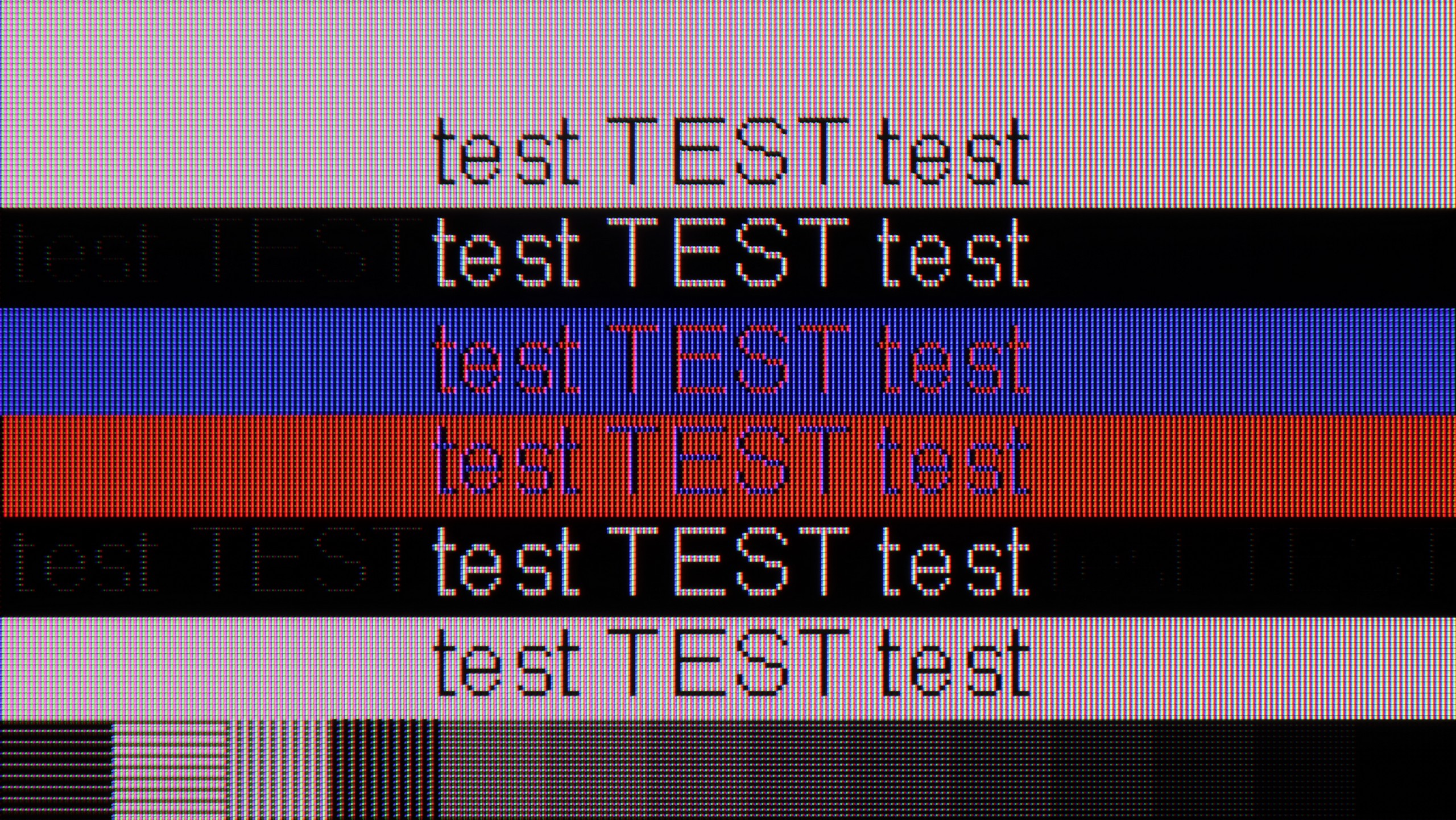
Samsung Q80D works well as a computer monitor. Thanks to support for 4:4:4 chroma (which only functions in "Game" mode), text on the screen is clear and legible, which is very important for those who want to work on such a television with text documents or spreadsheets. One of the biggest advantages of this model is its exceptionally low input lag in "PC" mode, which is just 9 ms. This is a reference-level result that ensures smoothness and responsiveness, which is crucial for both gamers and those involved in video editing. The only issue we can point out is that there is a certain problem with displaying fonts on dark backgrounds. When we zoom in on the tested font image, we notice that the horizontal lines are darker compared to the vertical ones. This means that the sub-pixels in the television do not fully illuminate in this case. This could be due to an oversight by the manufacturer regarding the optimisation of the algorithm responsible for displaying thin lines, which affects the quality of details in displaying text on dark backgrounds. Nevertheless, Samsung Q80D is a very good choice as a PC monitor.
The TCL P8K also works excellently as a computer monitor. The readability of fonts is at a very good level, making work with documents and browsing the web simply comfortable. The only slight downside occurs when refreshing at 144 Hz in 4K – dark text on a light background can slightly lose sharpness. The problem disappears when switching to 120 Hz, so it's worth keeping this in mind for everyday use. Besides, it is not only a screen for work but also a great monitor for gamers. The 144 Hz refresh rate (and even 280 Hz at a lower resolution) combined with G-Sync synchronisation guarantees very smooth gameplay. Of course, we will fully appreciate its capabilities only with a suitably powerful computer, but the potential of the P8K in this role is truly significant.
Viewing angles
3/10
2.8/10
Samsung Q80D, equipped with a VA panel, unfortunately does not perform well in terms of viewing angles. When we watch the screen at a 45-degree angle, there is a noticeable loss of brightness. The image becomes less sharp, which can be problematic if we plan to watch television from different spots in the room. However, the VA panel has its advantages. When looking directly at the screen, black levels are deep and well-saturated. Furthermore, even at an angle, dark colours maintain their depth, which is a rarity for this type of panel.
The Achilles' heel of the TCL P8K is undoubtedly its viewing angles. The VA panel used has its advantages in terms of solid contrast, but unfortunately, it suffers significantly when viewed from the side. Colours noticeably fade, saturation drops, and the overall image takes on a cooler, washed-out hue. In practice, this means that the best picture is achieved when sitting directly in front – any significant deviation results in a noticeable loss of quality.
TV efficiency during daytime
6/10
4.6/10

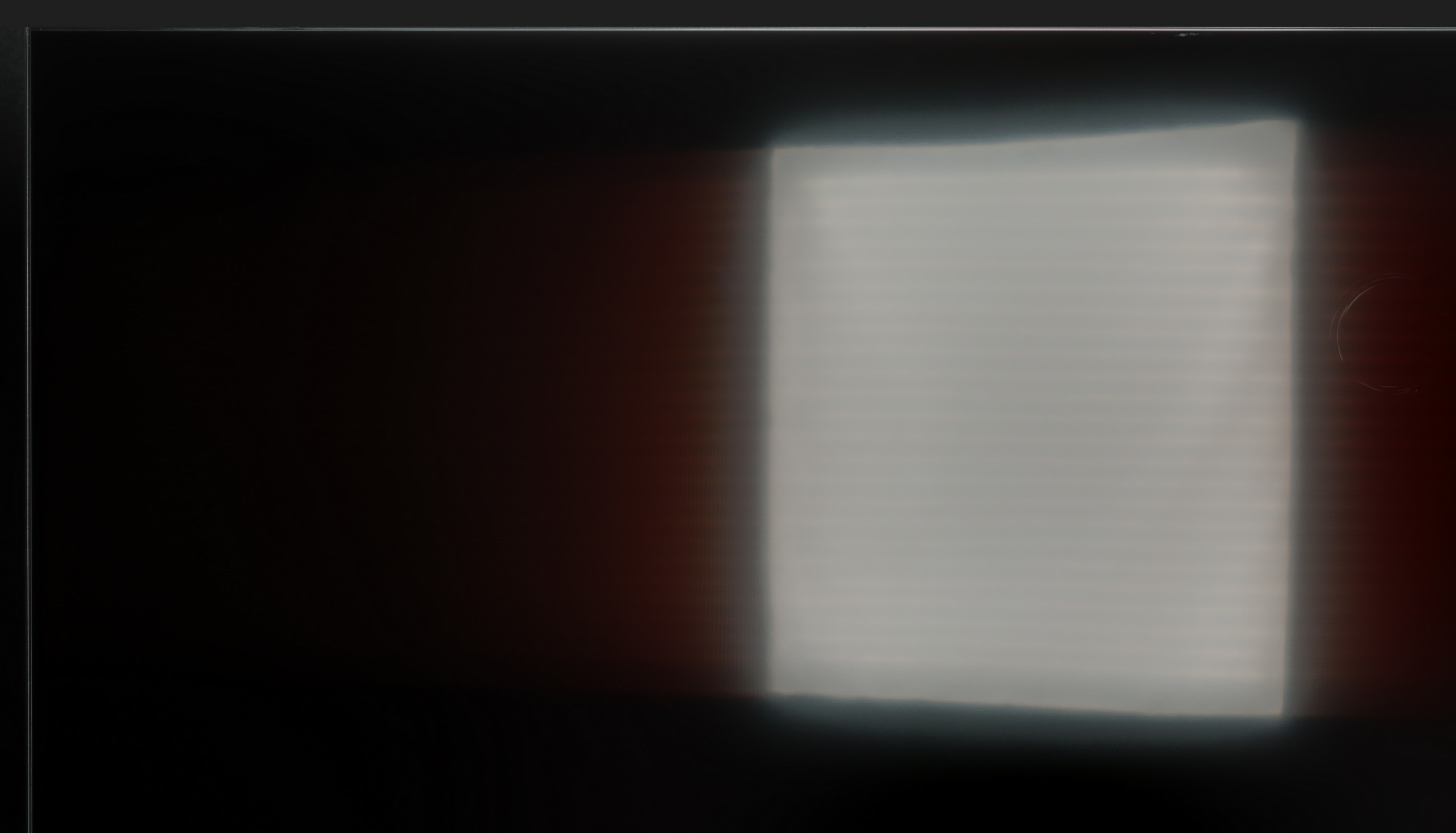

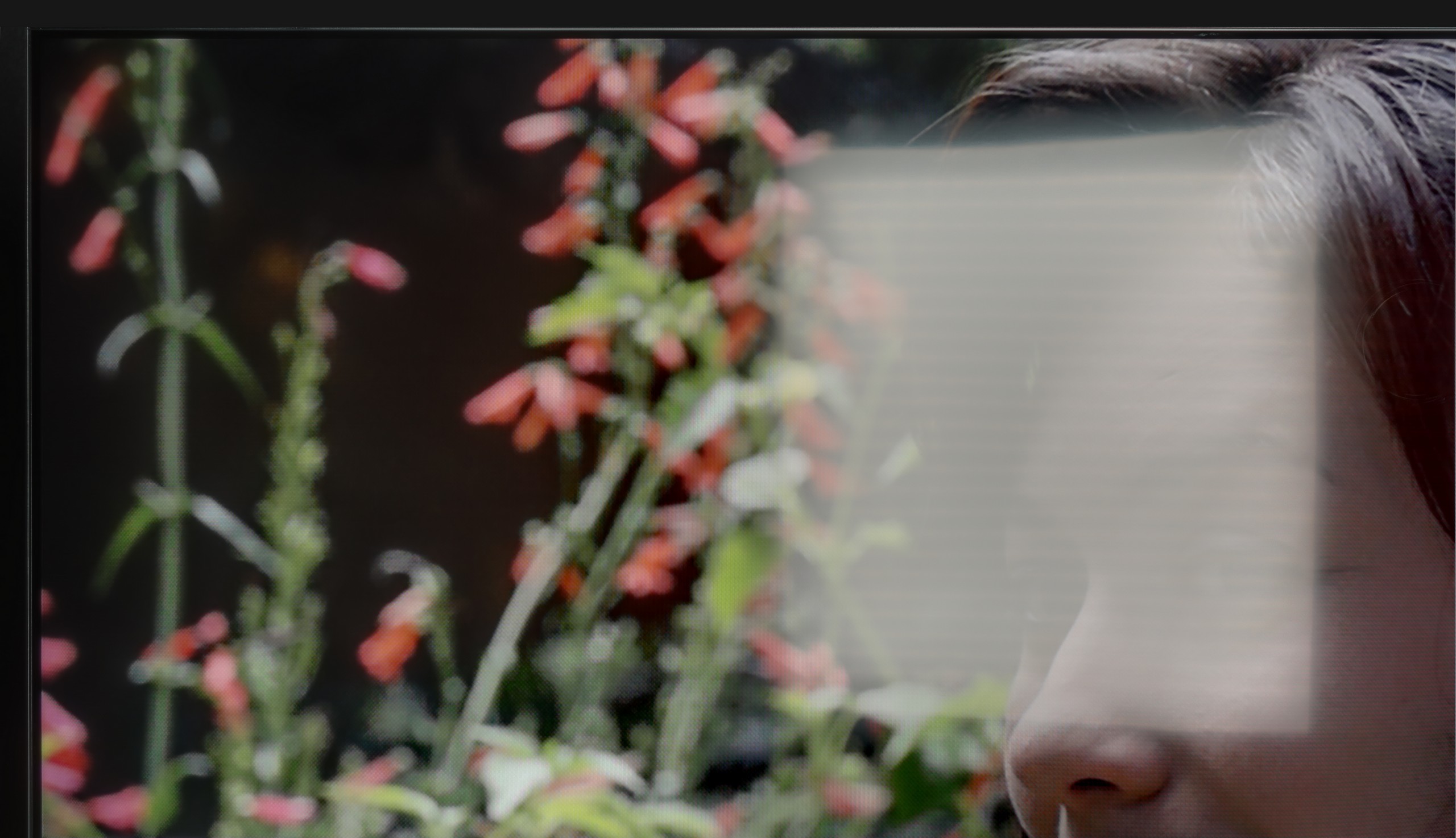
Matrix brightness
Average luminance SDR
TCL P89K / TCL P8K: 299 cd/m2
Samsung QLED Q80D: 550 cd/m2
The Samsung Q80D television stands out with very good brightness, averaging 550 nits, which is an impressive result, especially since it maintains this brightness across the entire screen surface. This makes the image clear and well-visible even in bright rooms, which is a big plus when watching television during the day. However, despite the satin coating of the panel, the television struggles somewhat with reducing reflections. In bright lighting conditions, unwanted glares can appear, which may disrupt viewing comfort. This is particularly noticeable when there are light sources in the room directly falling on the screen.
TCL P8K does not cope well with strong sunlight. With brightness at around 300 cd/m², it is hard to expect it to perform well in a living room with large windows and no blinds. In such conditions, the image loses some sharpness, and darker scenes can disappear in light reflections. Fortunately, the screen has a satin coating that handles reflections well and saves the situation in typical home conditions. In the evening or in a slightly dimmed room, the television looks very good. It is simply not a device that prefers to be placed opposite a south-facing window.
Details about the matrix
Subpixel Structure:

Panel uniformity and thermal imaging:

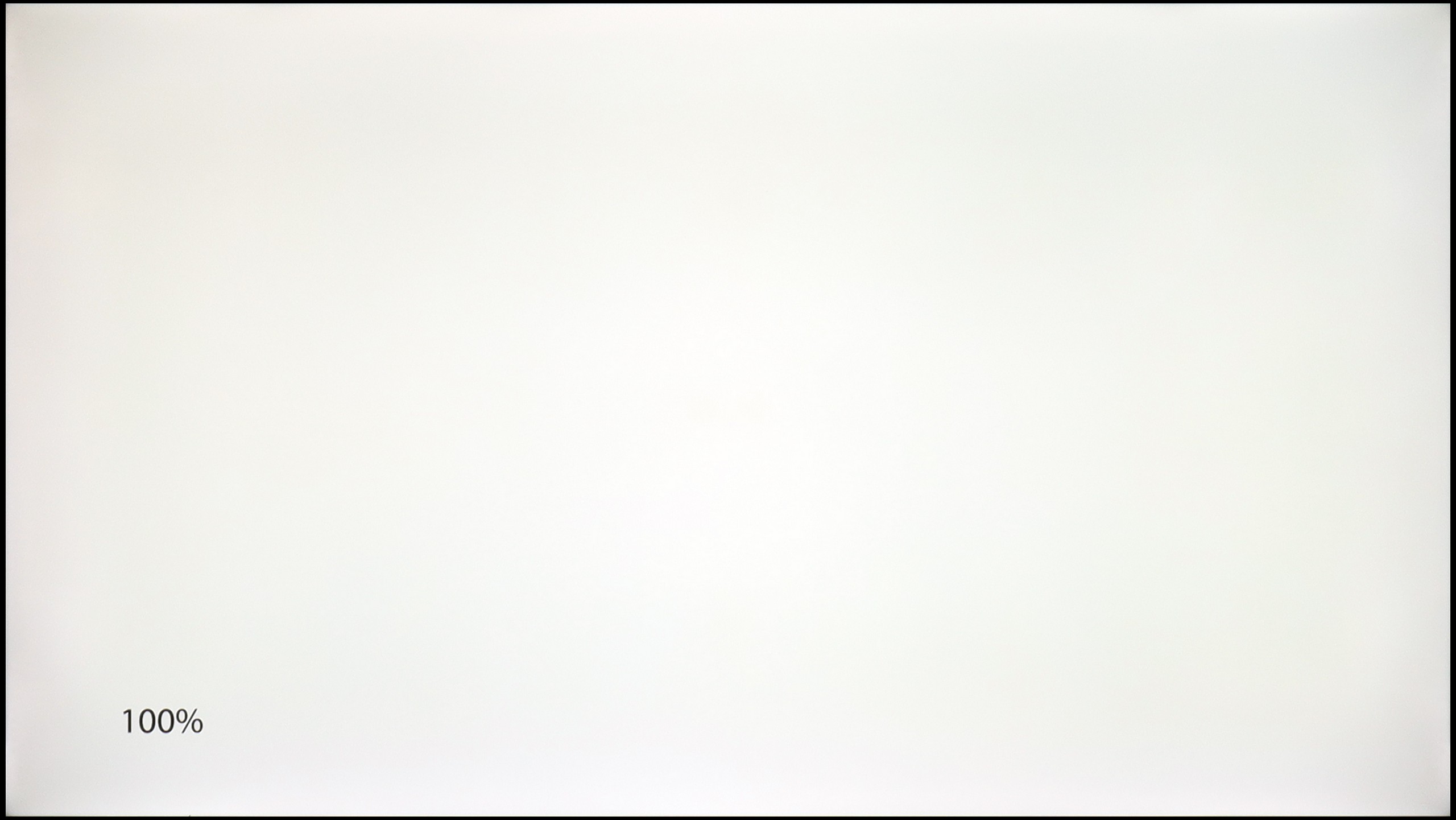
Samsung QLED Q80D
TCL P89K / TCL P8K
TV features
8/10
7.4/10
- HDMI inputs0 x HDMI 2.0, 4 x HDMI 2.1 48Gbps2 x HDMI 2.0, 2 x HDMI 2.1 48Gbps
- OutputsToslink (Optical audio), eARC (HDMI), ARC (HDMI)Toslink (Optical audio), eARC (HDMI), ARC (HDMI)
- Network InterfacesWi-Fi 2.4GHz, Wi-Fi 5GHz, Ethernet (LAN) 100MbpsWi-Fi 2.4GHz, Wi-Fi 5GHz, Ethernet (LAN) 100Mbps, Ethernet (LAN) 1Gbit
- TV receptionDVB-T, DVB-T2, DVB-S, DVB-S2, DVB-CDVB-T, DVB-T2, DVB-S, DVB-S2, DVB-C
Classic features:
- Recording to USB (terrestrial TV)
- Recording programming
- Picture in Picture (PiP)
- RF remote control (no need to aim at the screen)
- Backlit remote control
- Teletext
- Audio only mode
- Bluetooth headphones support
- Simultaneous Bluetooth headphones & TV audio
Smart features:
- AirPlay
- Screen mirroring (Windows Miracast)
- Voice search
- Voice search in native language
- Ability to connect a keyboard and mouse


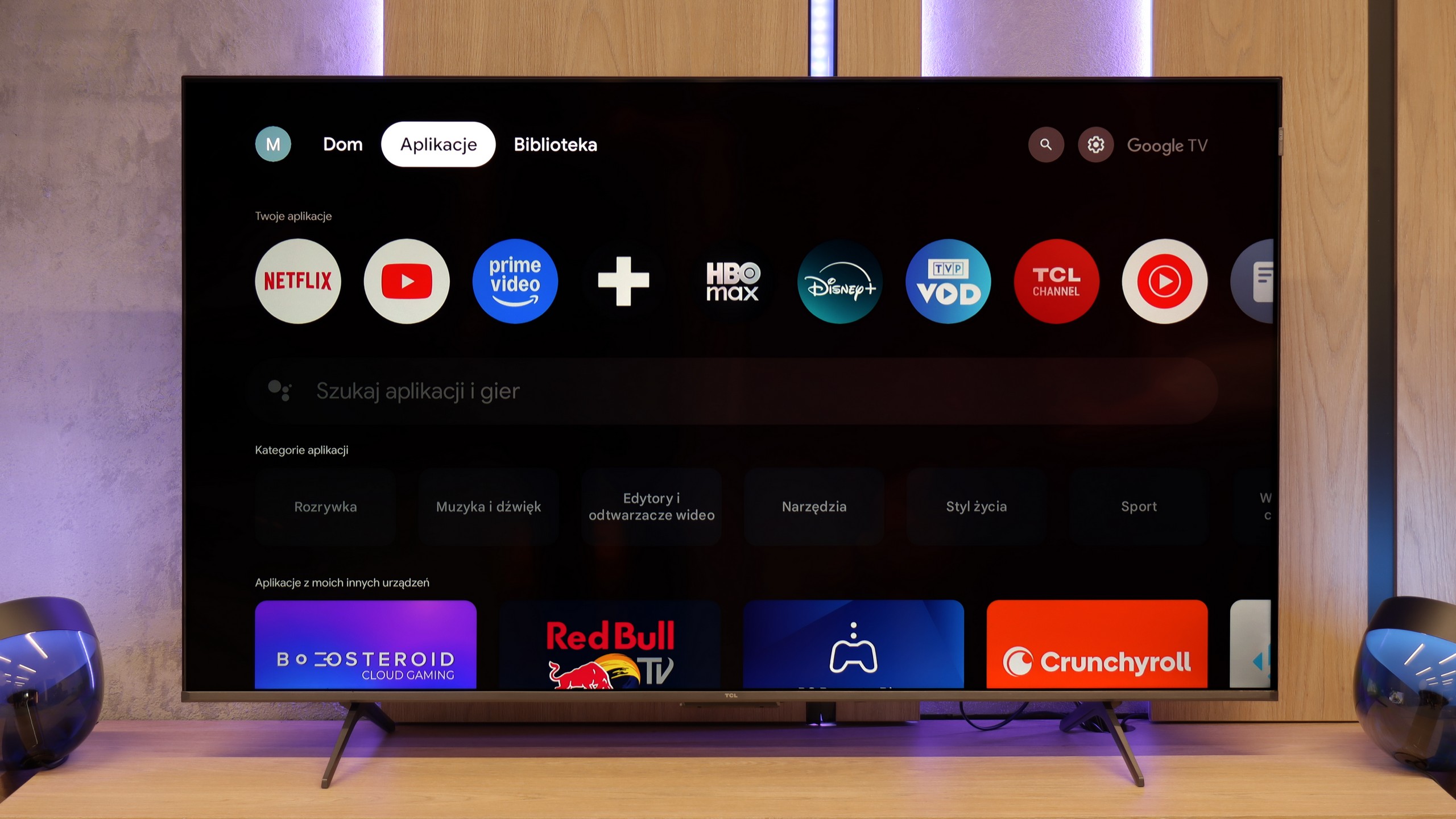
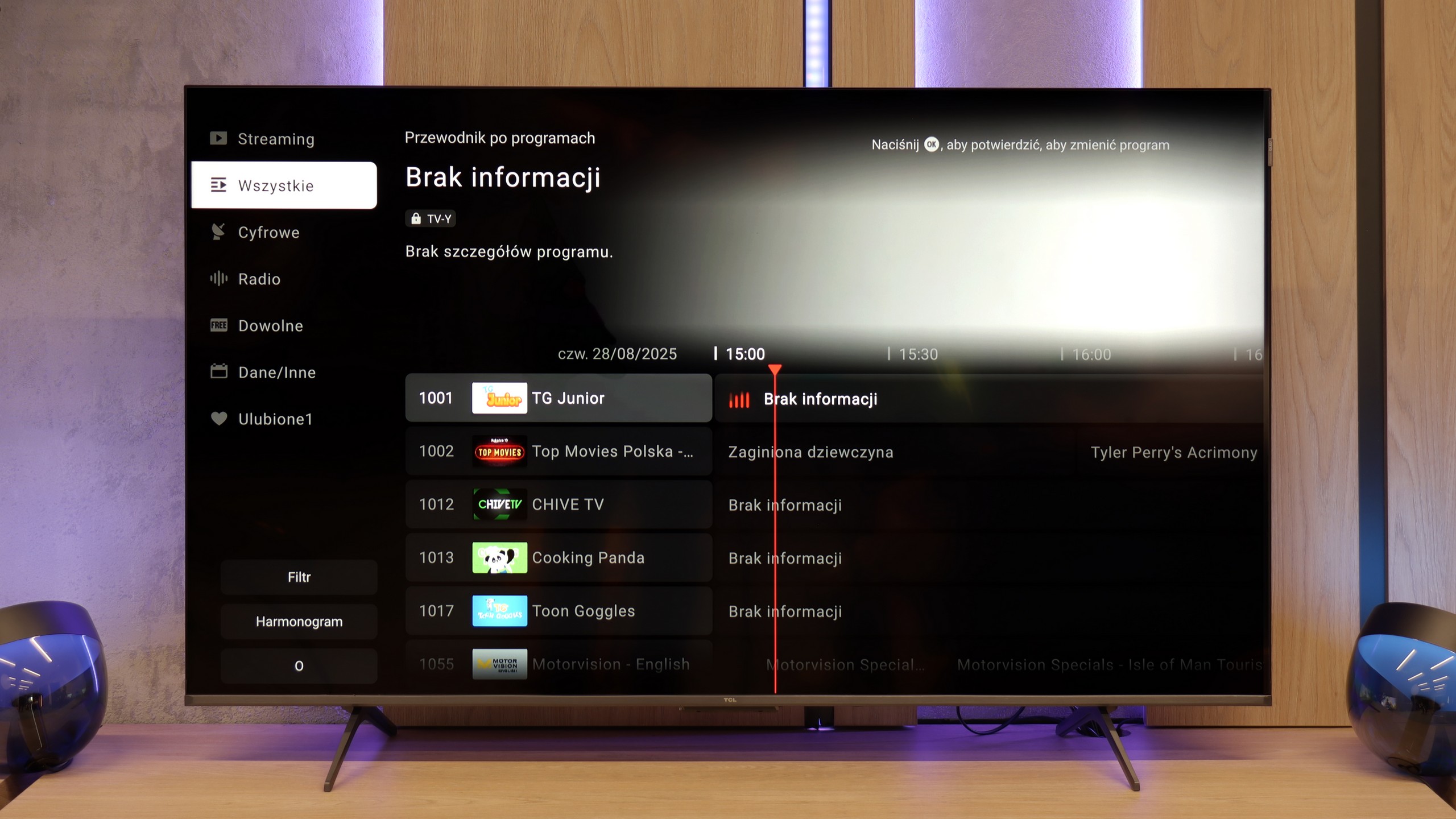
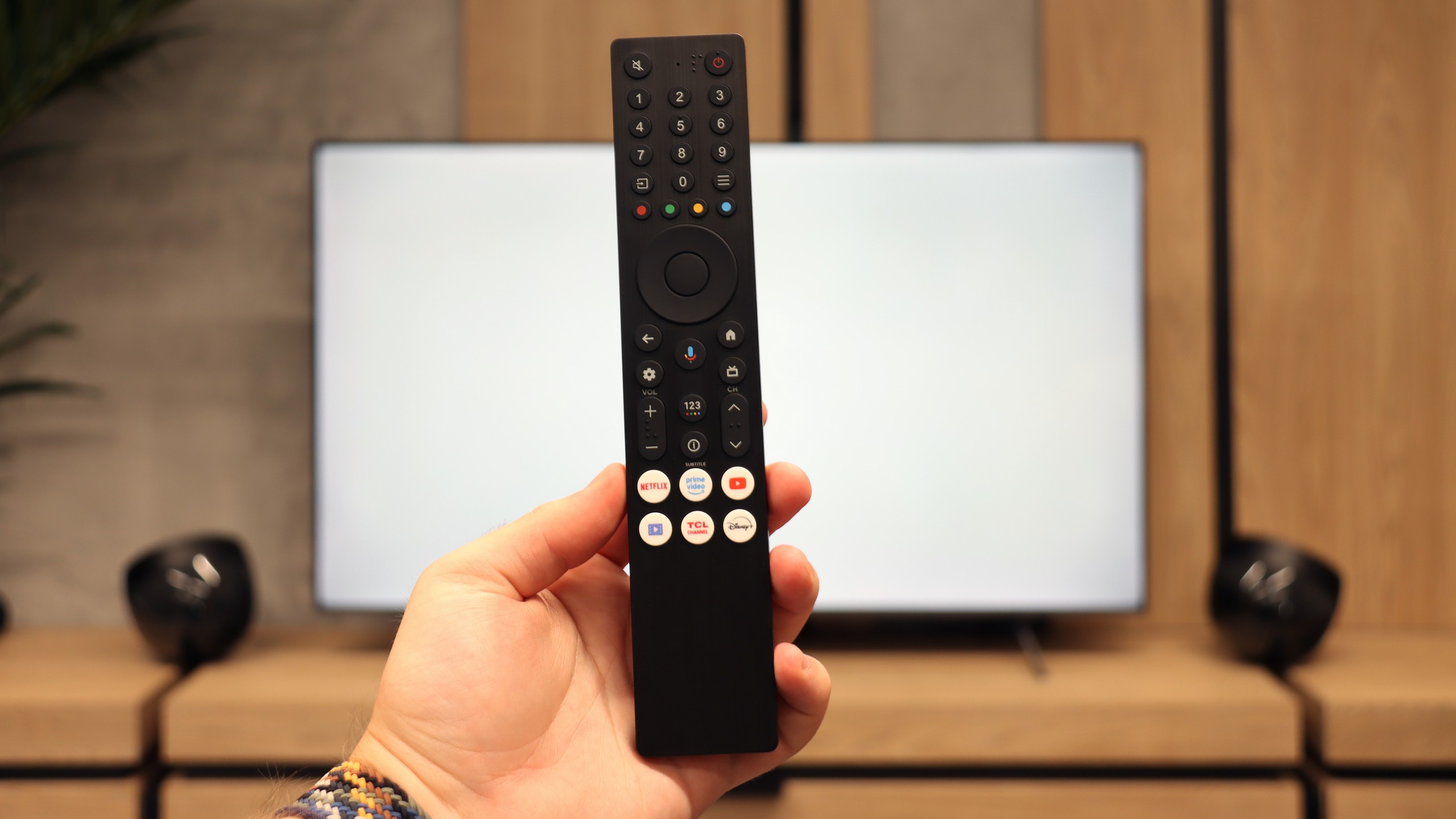
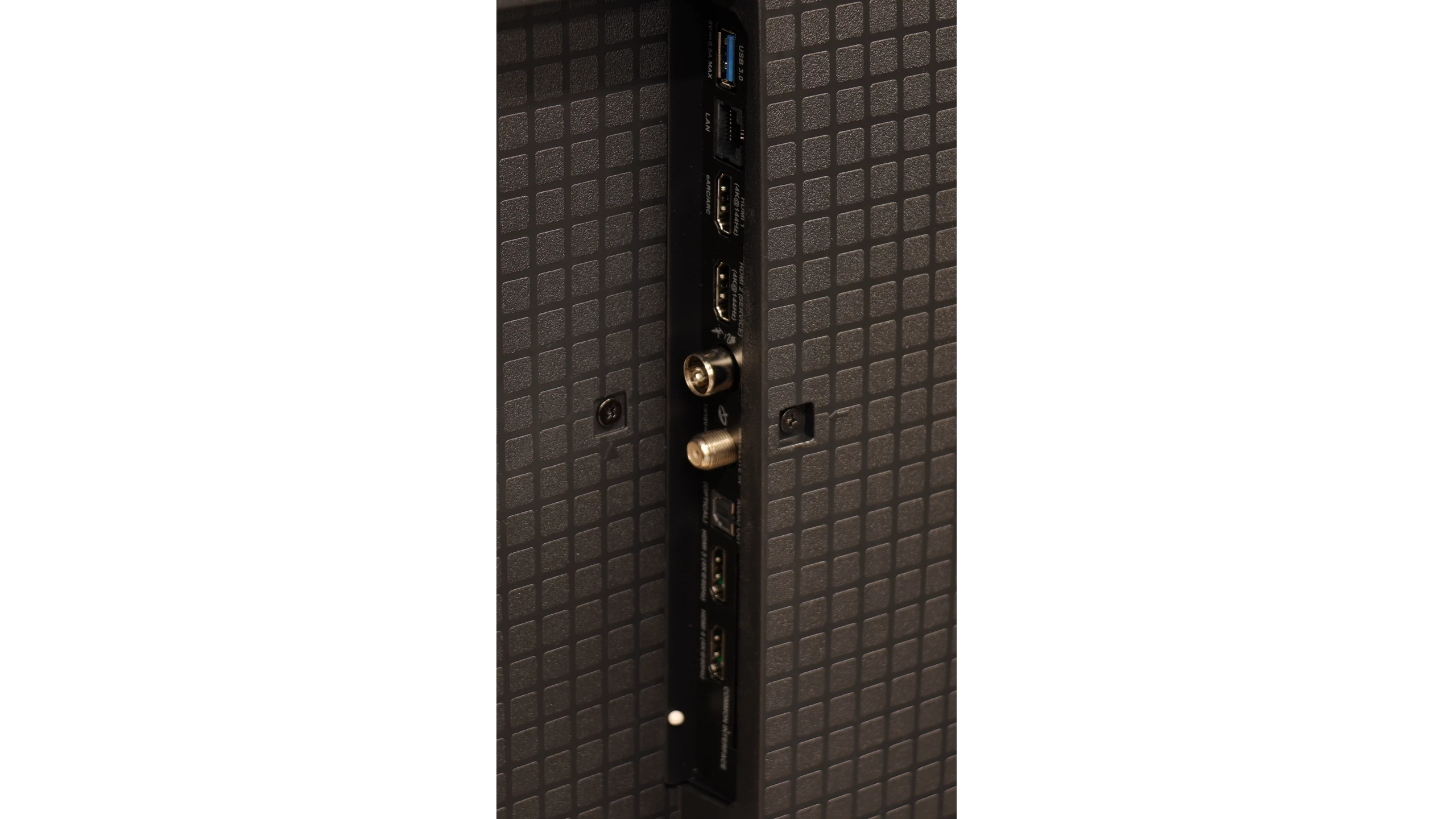
The Samsung Q80D television offers a range of features that significantly enhance user comfort. The Tizen system is an advanced platform that provides users with an intuitive and smooth experience. Thanks to its user-friendly interface, navigation through apps and settings is quick and easy. Tizen supports a rich set of applications, including popular streaming services, allowing access to a wide variety of entertainment content without the need for additional devices, with the novelty for 2024 being support for the Polish language. It is also worth mentioning the solar remote, which is not only eco-friendly but also convenient for everyday use. The solar cell remote can easily control other devices such as home cinemas, decoders (e.g. Canal+), or game consoles, which poses quite a challenge for other manufacturers. Returning to the console, Samsung Q80D offers several features that may appeal to gamers. Above all, the television supports VRR (Variable Refresh Rate) technology, which allows for smoother game displays, eliminating issues like tearing and stuttering. Additionally, due to its low input lag, gaming reactions are quick and precise. The Samsung Q80D is also equipped with a Game Bar function, which allows quick access to key gaming settings without the need to exit the game. From this level, we can check and adjust parameters such as VRR, input lag, frames per second (FPS), as well as screen ratios or sound settings. This enables gamers to continuously optimise their experiences by adjusting settings to the current gameplay needs. The television supports AirPlay, allowing for easy content streaming from Apple devices, and enables connection to various Bluetooth devices, such as mice or headphones, increasing its versatility. The only downside that can be considered is the lack of support for USB recording and the fact that the Q80D unfortunately does not support the DTS audio format. This means that if we have content encoded in this format, the device will not be able to correctly playback the audio track. This could pose a problem for those using Blu-ray discs or multimedia files that often use DTS to provide high-quality surround sound. To achieve full audio experiences, it may be necessary to use an external player or soundbar that supports this format.
SmartTV: Google TV
TCL P8K operates based on the Google TV system, which is the heart of the entire device. This is where the biggest advantage of this model over many competitors in a similar price range is visible. The system is clear and easy to use, and very well optimised. We can easily make use of the screen mirroring feature or the built-in Chromecast, which allows us to quickly transfer images from our phone to the large screen. The greatest asset, however, is the Google Assistant, which responds promptly and really understands commands well – even those expressed imprecisely. Moreover, the application library in Google TV is a real treasure – you can install practically anything, from major VOD platforms to lesser-known music or sports applications.
Classic features
As for classic television functions, the P8K doesn't have much to boast about. The remote is simple and convenient, with a large number of buttons, and the presence of Bluetooth allows you to connect wireless headphones or a speaker. And really, that’s where the list of conveniences ends. You won’t find USB recording, PiP functionality, or even working teletext here. TCL has clearly focused on modern content and internet features, rather than classic solutions known from older receivers. This television is meant to shine in the world of applications and streaming – and that’s exactly what it does.
Playing files from USB
9.1/10
8.9/10
Supported photo formats:
Maximum photo resolution:

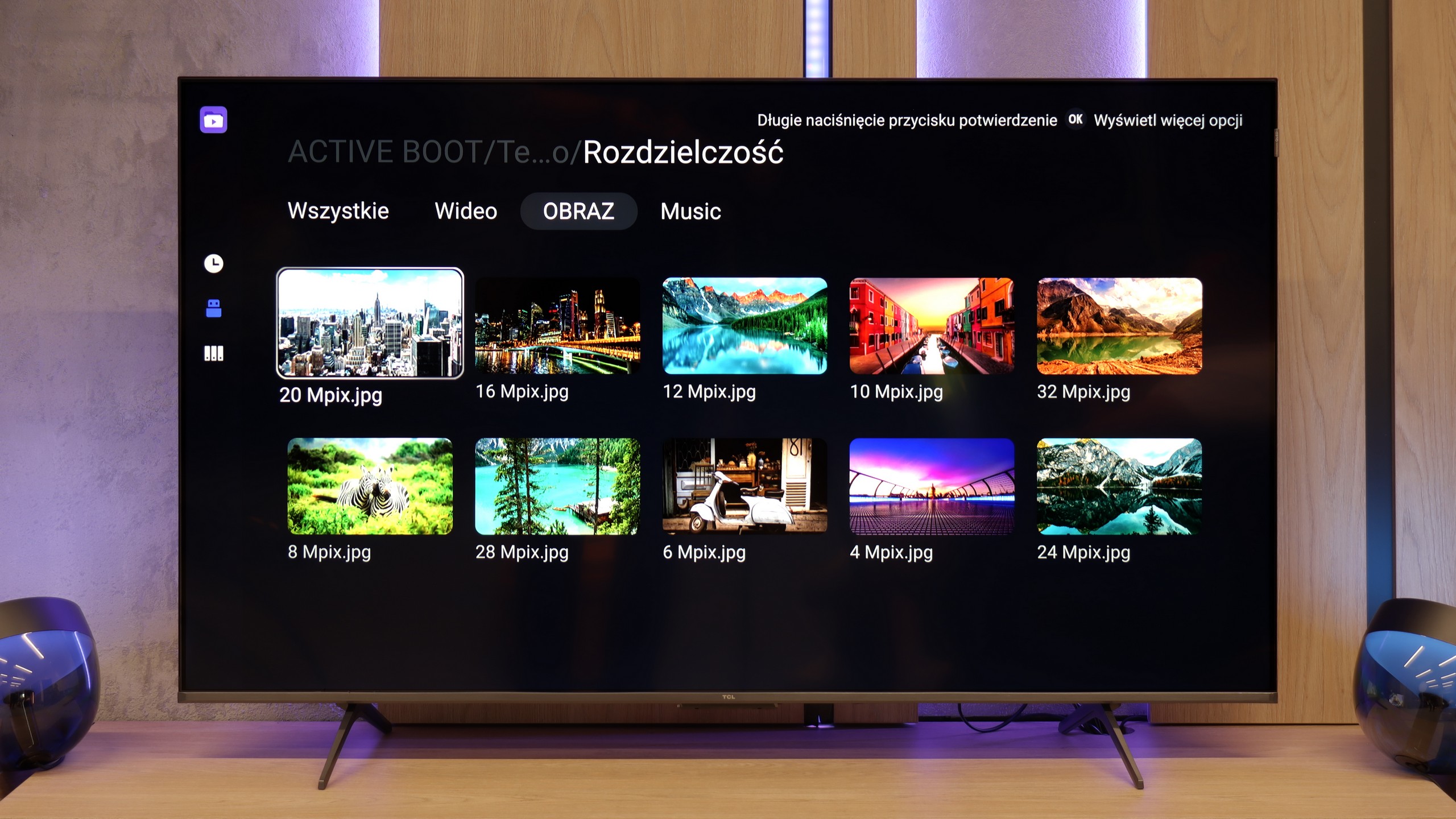
The built-in player in the Samsung Q80D television is definitely one of its strong points. It handles almost all video and audio files we used in our tests exceptionally well. The only exceptions are the Dolby Vision format, which is not surprising, and less popular codecs. Additionally, it is worth noting the support for Polish characters and the ability to customise font colours. On the downside, the television performs somewhat worse with photo formats, as it only supports JPEG from the popular options, lacking support for formats like PNG or Apple HEIC.
Playing files from USB on the TCL P8K is quite decent. The television handles most popular video formats, as well as subtitles and audio files, without any issues. Problems may only arise with less common codecs or unusual file containers that the built-in player simply does not recognise. Fortunately, with Google TV, this is not a problem at all - in just a few moments, you can download an external player, such as VLC, MX Player or Kodi, and the issue disappears.
Apps
8.7/10
9.6/10














































Sound
6.6/10
6.7/10
- Maximum volume-80dB
- Dolby Digital Plus 7.1
- Dolby True HD 7.1
- Dolby Atmos in Dolby Digital Plus (JOC)
- Dolby Atmos in Dolby True HD
- DTS:X in DTS-HD MA
- DTS-HD Master Audio
The Samsung Q80D television is equipped with a decent audio system boasting 40W power in a 2.2 configuration, providing quite good sound experiences. This system supports all popular Dolby codecs, allowing for the use of advanced audio formats while watching films or playing games. However, it is worth noting one drawback: the television does not support DTS functionality. Nonetheless, this lack can be circumvented by connecting an external audio system, which can significantly enhance sound quality and provide a more immersive audio experience. Additionally, Samsung offers a wide portfolio of soundbars that can be integrated with the television, as well as the Q-Symphony system, which allows for the synchronisation of sound between the television and the soundbar.
For a television in this price range, the TCL P8K really manages to surprise with its sound. The 2.1 system used here, branded by Onkyo, along with the subwoofer placed at the back of the casing, offers surprisingly enjoyable, full bass and quite a wide soundstage. The sound is warm, and with the right material, one can even get the impression that the audio gains depth and character – something you rarely expect from a television at this price. It performs quite well for music. However, it is not perfect. The P8K is not one of the particularly loud televisions – during tests, we noticed a strange tendency to automatically lower the volume, even with the volume slider set to maximum. It seems to be the effect of some internal limiter designed to protect the speakers (or our ears). It’s a shame, as the potential in this setup is considerable, and without this limitation, the sound could have been even fuller.
Acoustic Measurements
No acoustic data
80dBC (Max)
75dBC
